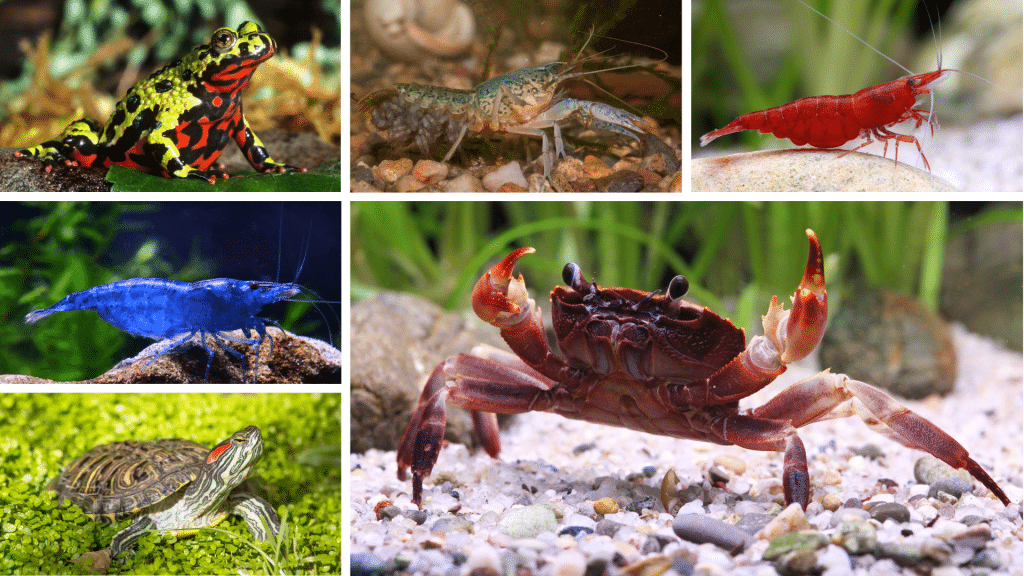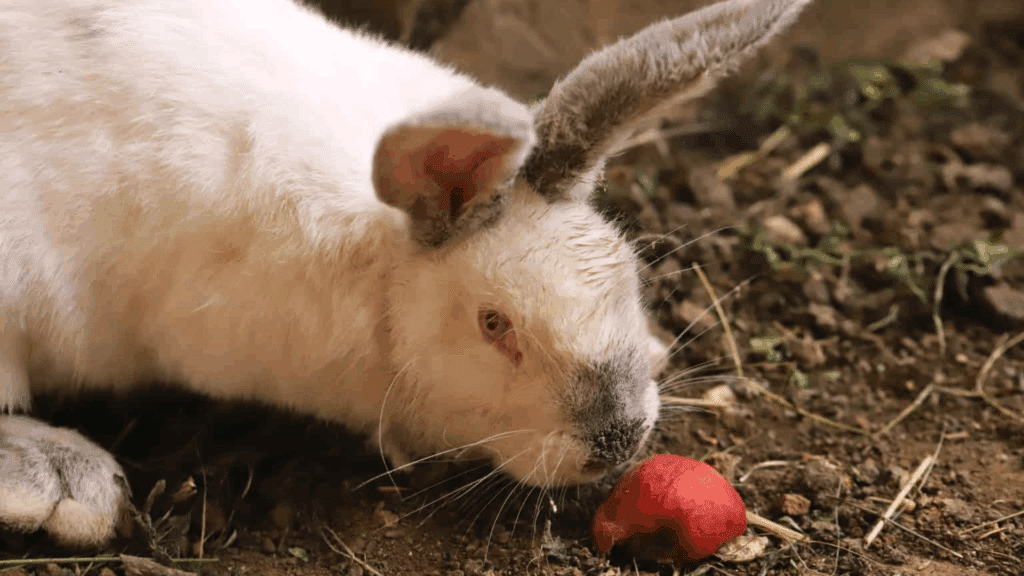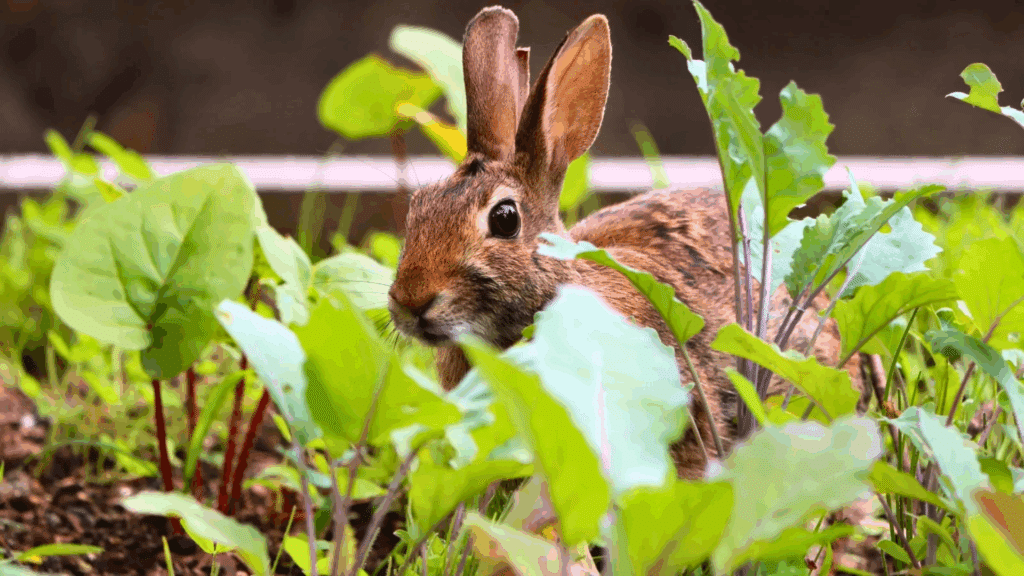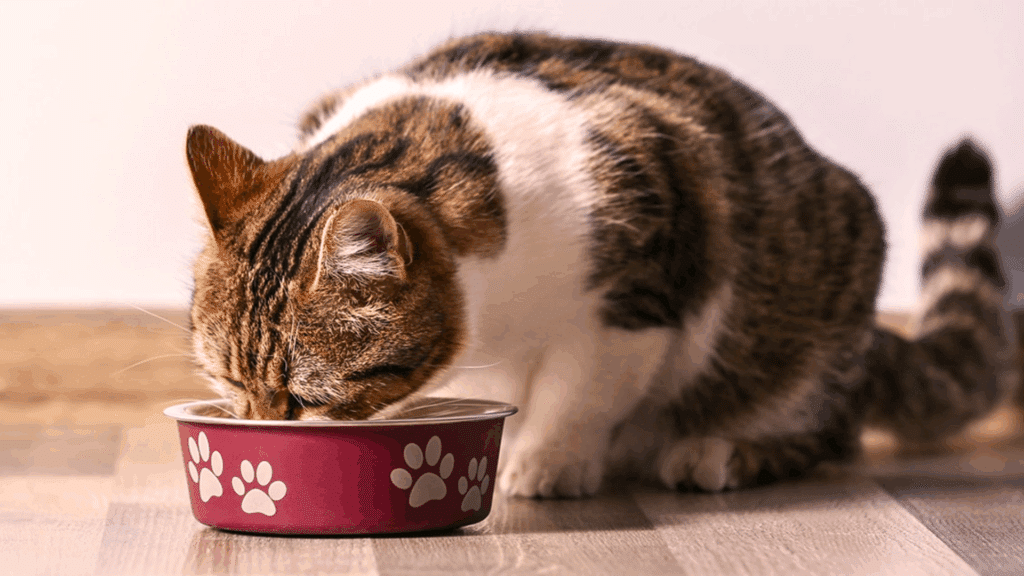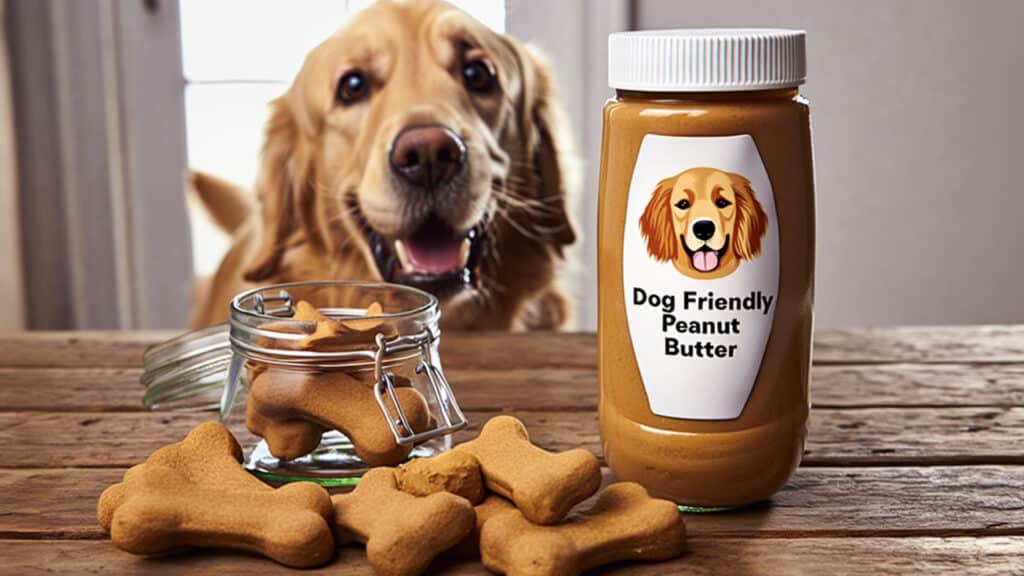Aquariums aren’t just for fish. With the right setup, you can fill your tank with non-fish pets that are just as fun and much easier to care for.
This guide shares easy-care non-fish pets for beginners, busy owners, and anyone seeking something different.
From tiny shrimp that eat leftovers to snails that keep your tank clean, these small creatures add balance and color to your aquarium. You’ll also meet crabs, frogs, and turtles that bring new life to your aquarium.
This list covers:
- The best low-care non-fish pets
- What each one needs to stay healthy
- Tips for keeping your aquarium simple and clean
Let’s look at how you can enjoy an aquarium that’s lively, balanced, and stress-free, without the fish.
Why Choose Non-Fish Pets for Your Aquarium?
I like keeping non-fish pets because they’re simple to care for and still make an aquarium fun to watch. If you’re new to tanks or don’t have much time, these pets are a smart choice.
They need less feeding, fewer water changes, and are often more forgiving when you forget a task or two. You’ll notice how each pet has its own behavior.
Shrimp stay busy cleaning up bits of food, snails move slowly along the glass, and crabs scuttle around looking for snacks.
They make your tank feel alive in different ways. You can keep them with fish or on their own.
Many of them even help fish stay healthy by keeping waste and algae under control. They don’t just look good, they help your tank stay clean and balanced, too.
Top Non-Fish Aquarium Pets: Snails
Snails are some of the easiest and most useful non-fish pets you can keep. They help clean algae, eat leftover food, and add gentle movement to your tank.
1. Nerite Snail
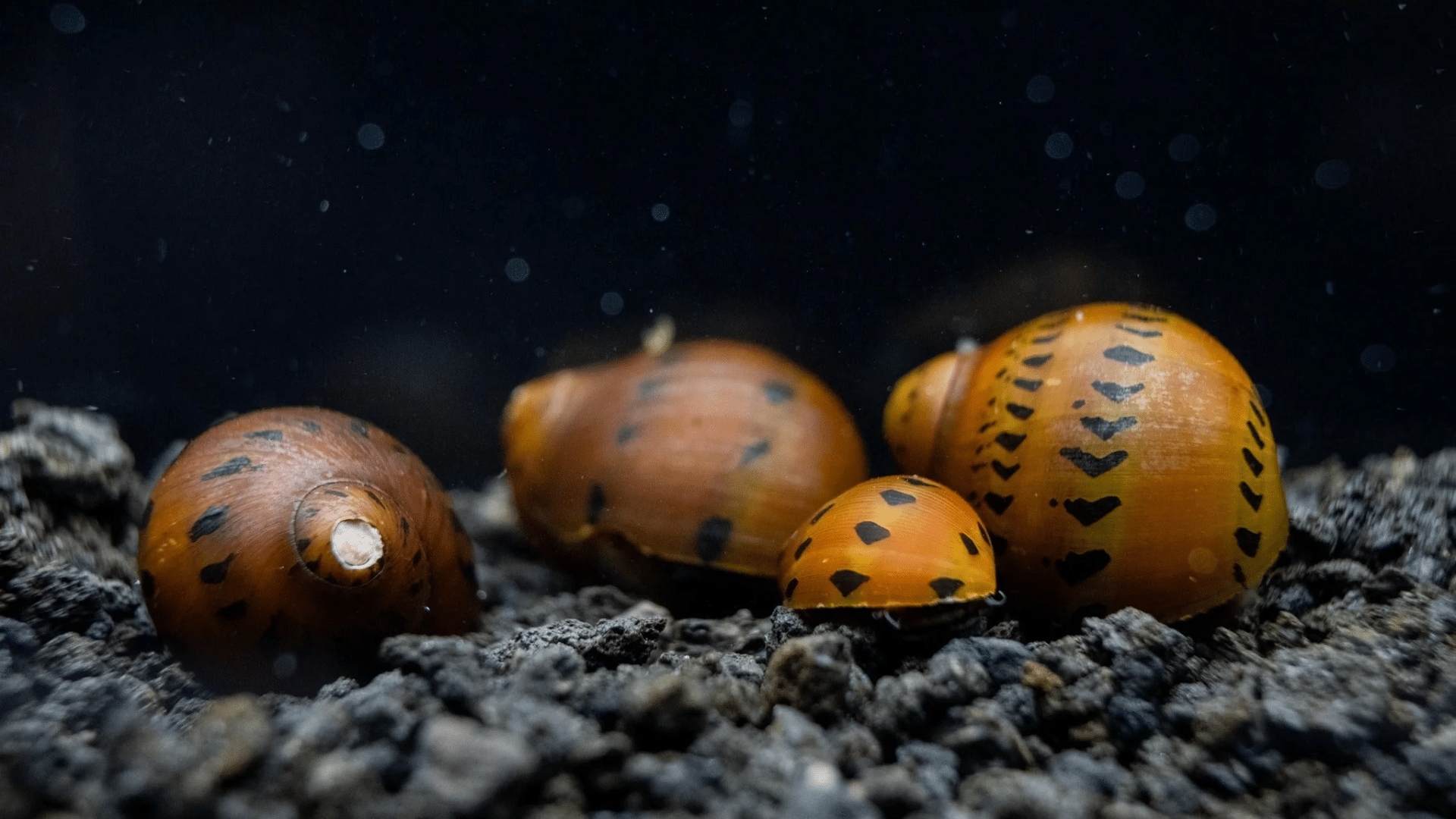
Nerite snails are small, peaceful, and perfect for beginners who want a clean, low-maintenance tank.
They’re famous for eating algae from glass, plants, and decorations without damaging anything. Because they can’t reproduce in freshwater, you won’t have to worry about overpopulation.
Their shells come in beautiful patterns; zebra, tiger, and horned varieties are especially popular. These little snails stay active and help keep your aquarium spotless while adding a natural touch.
- Diet: Algae, blanched vegetables, algae wafers
- Lifespan: 1–2 years
- Water Temperature: 72–78°F (22–26°C)
- Water pH Level: 7.0–8.5
2. Mystery Snail
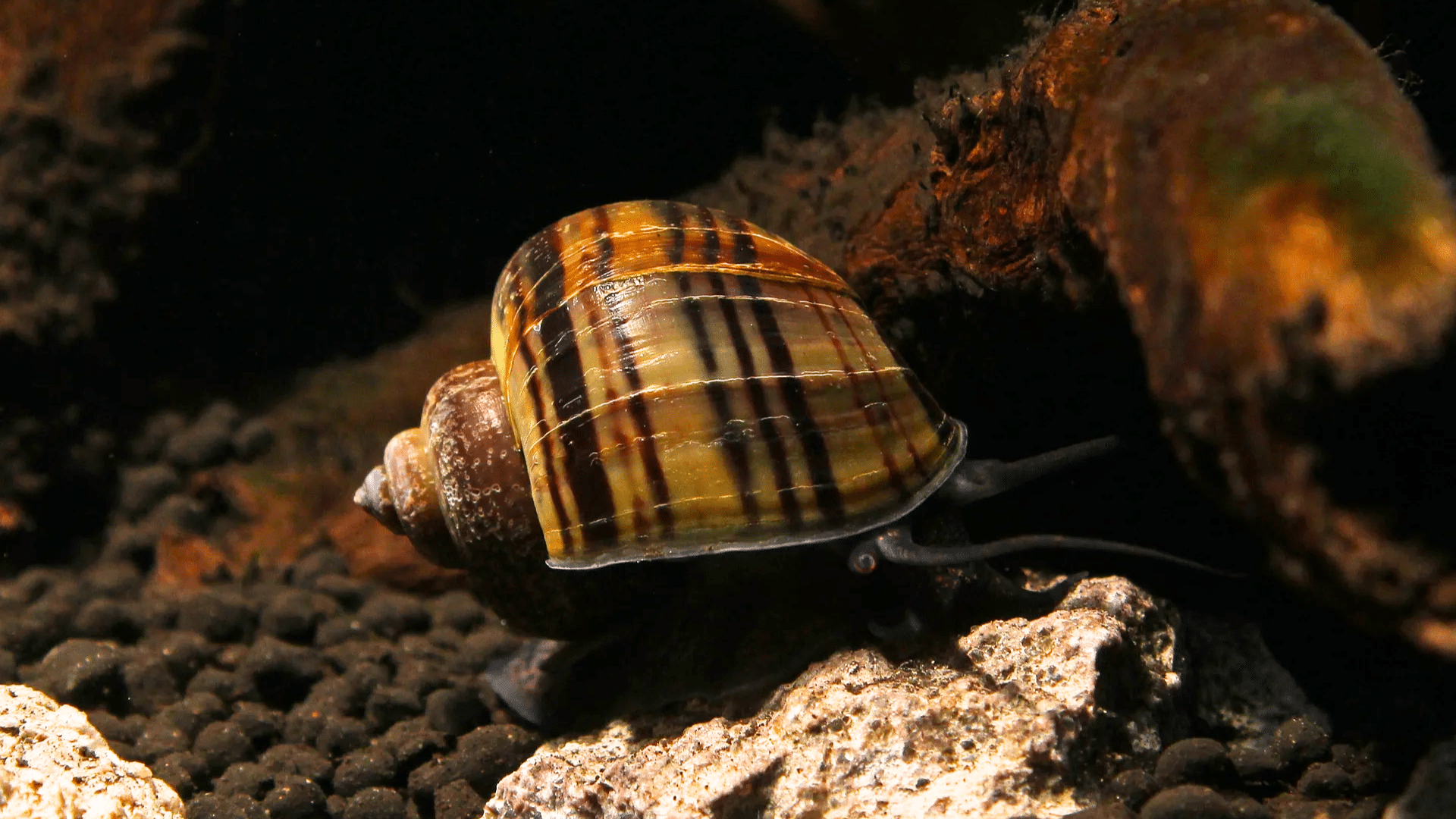
Mystery snails are colorful, calm, and very easy to care for, making them great for any freshwater tank. They spend their days gliding along glass and plants, cleaning up leftover food and algae.
These snails have long, curious antennae and come in bright shades like gold, blue, and purple. Unlike pest snails, they reproduce slowly and are easy to control.
They also breathe air through a siphon, which makes them fun to watch as they move to the surface.
- Diet: Algae, sinking pellets, blanched vegetables
- Lifespan: 1–3 years
- Water Temperature: 68–82°F (20–28°C)
- Water pH Level: 7.2–8.0
3. Ramshorn Snail
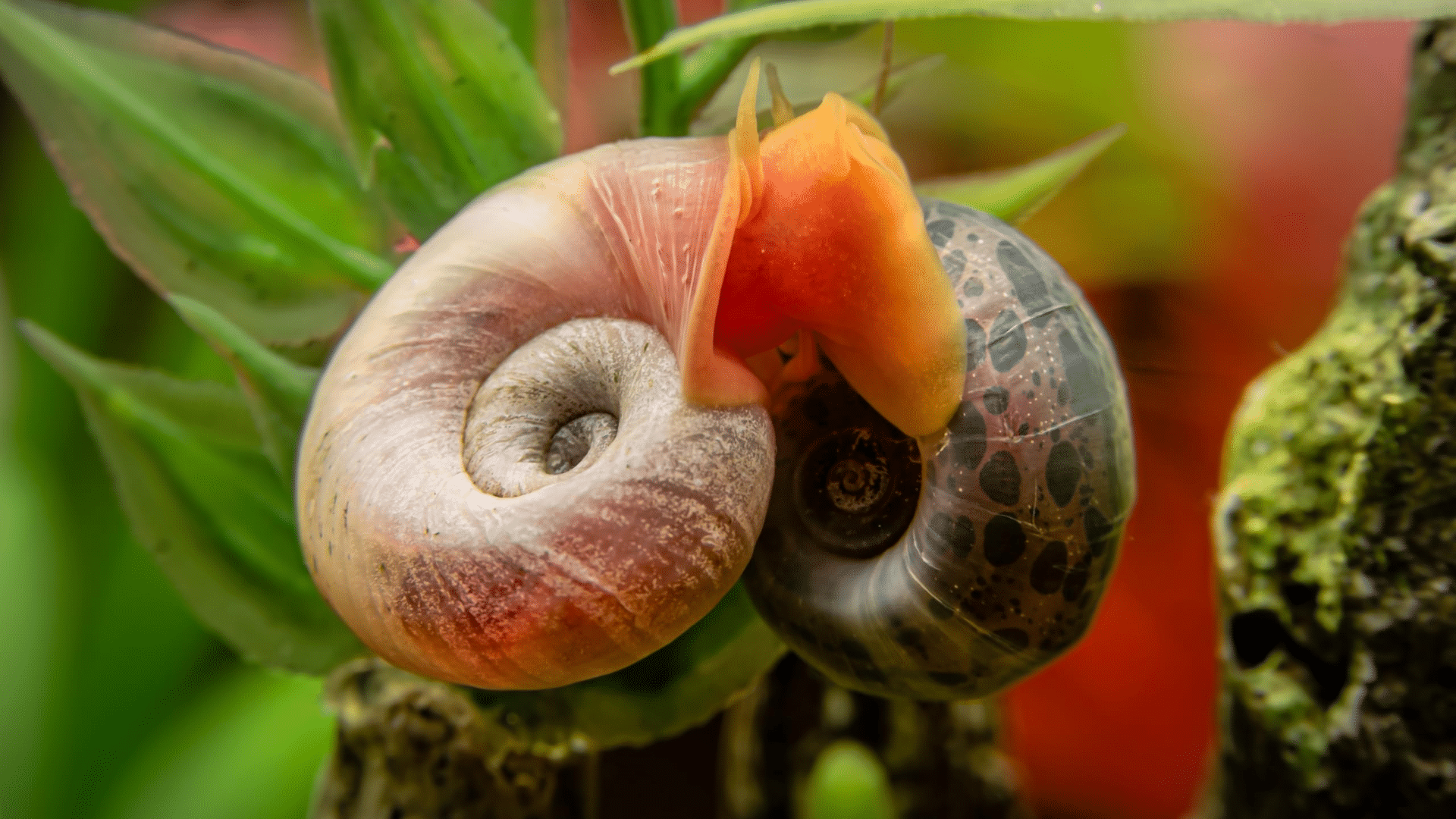
Ramshorn snails are known for their spiral shells that resemble a ram’s horn. They’re active scavengers that eat leftover food and soft algae, helping keep tanks clean.
They come in red, blue, and brown varieties and can add movement to your aquarium.
However, they breed quickly, so it’s best to keep their population in check. With the right care, they’re peaceful and great for planted tanks.
- Diet: Algae, fish flakes, blanched vegetables
- Lifespan: 1–2 years
- Water Temperature: 70–78°F (21–26°C)
- Water pH Level: 7.0–7.8
4. Malaysian Trumpet Snail
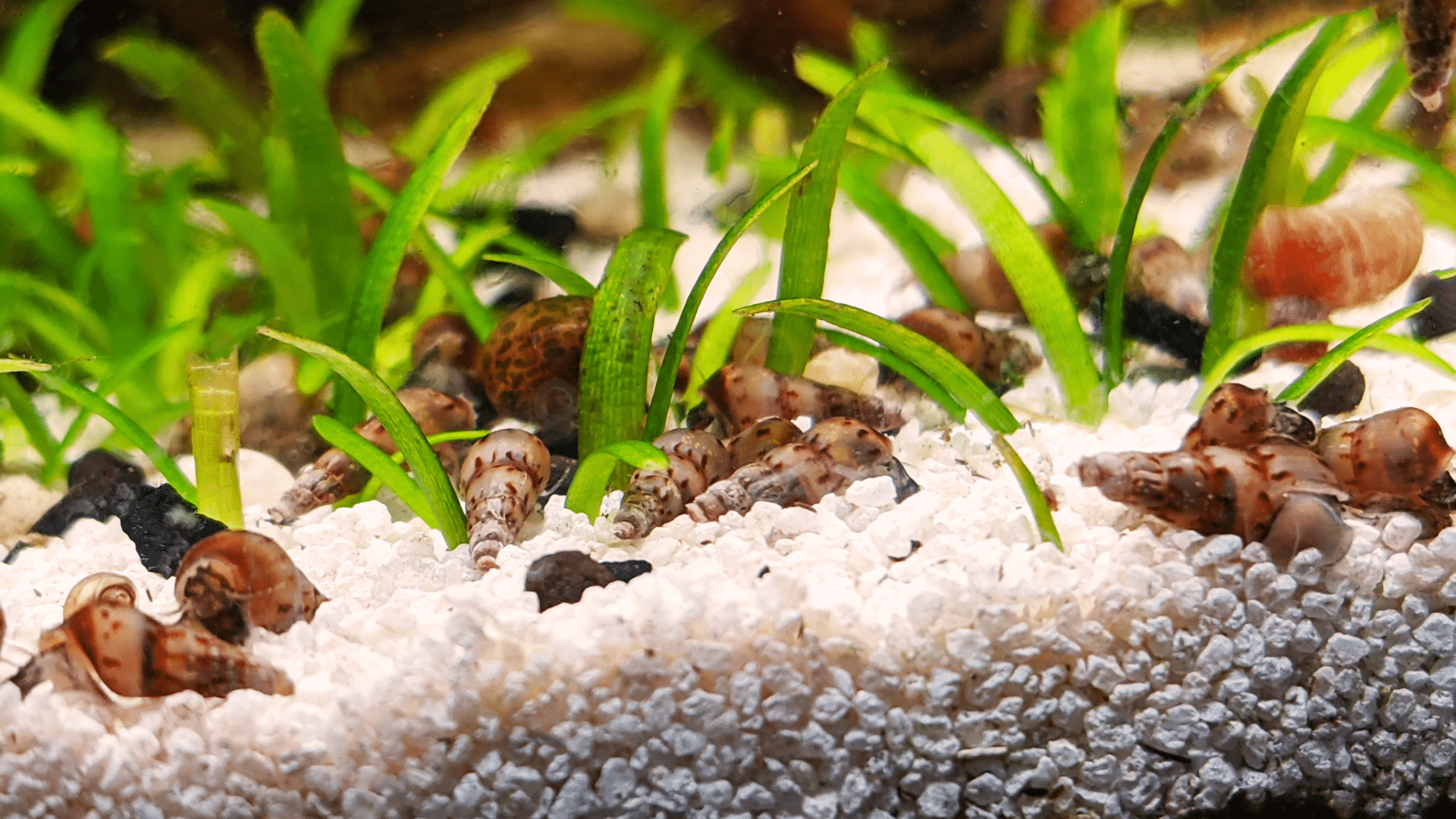
Malaysian trumpet snails are nocturnal cleaners that burrow into the substrate, keeping it aerated and preventing harmful gas buildup.
They’re tough and adapt to many water conditions, making them ideal for beginners. Their cone-shaped shells look unique, and they help stir up the gravel to keep waste from collecting.
Be mindful of their fast breeding if the tank has excess food.
- Diet: Algae, detritus, leftover fish food
- Lifespan: 1–2 years
- Water Temperature: 70–80°F (21–27°C)
- Water pH Level: 7.0–8.0
5. Rabbit Snail
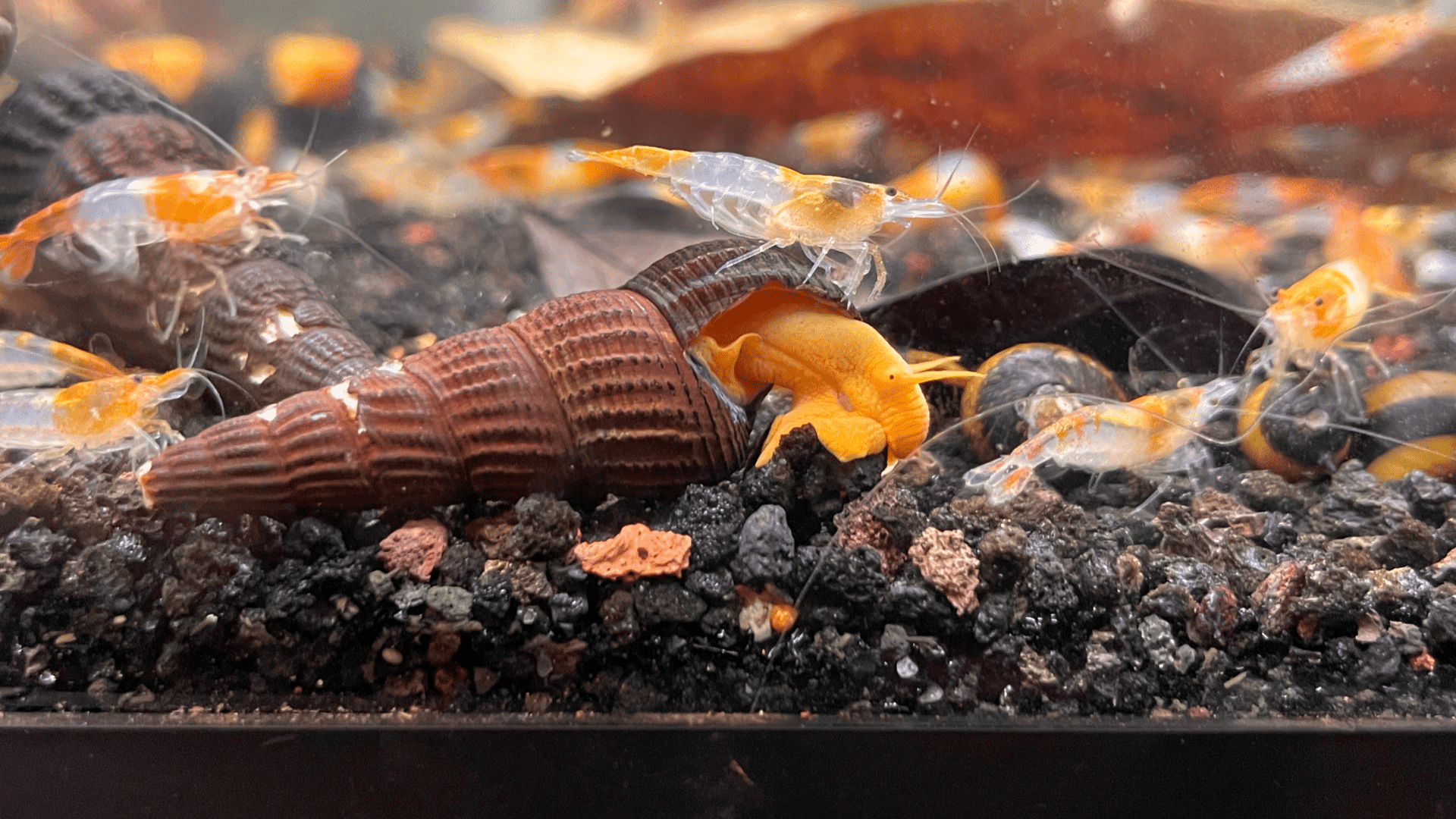
Rabbit snails are larger and more striking than most freshwater snails.
Their long shells and slow, graceful movements make them fascinating to watch. They’re gentle algae eaters and won’t harm live plants.
These snails reproduce slowly and live longer than many other types, making them a great long-term choice for calm tanks. They prefer soft, sandy substrates to move around easily.
- Diet: Algae, sinking pellets, blanched vegetables
- Lifespan: 3–5 years
- Water Temperature: 76–84°F (24–29°C)
- Water pH Level: 7.5–8.5
Top Non-Fish Aquarium Pets: Shrimp
Shrimp bring color and activity to any aquarium while keeping it clean. They’re peaceful, easy to care for, and perfect for both new and experienced keepers.
6. Cherry Shrimp
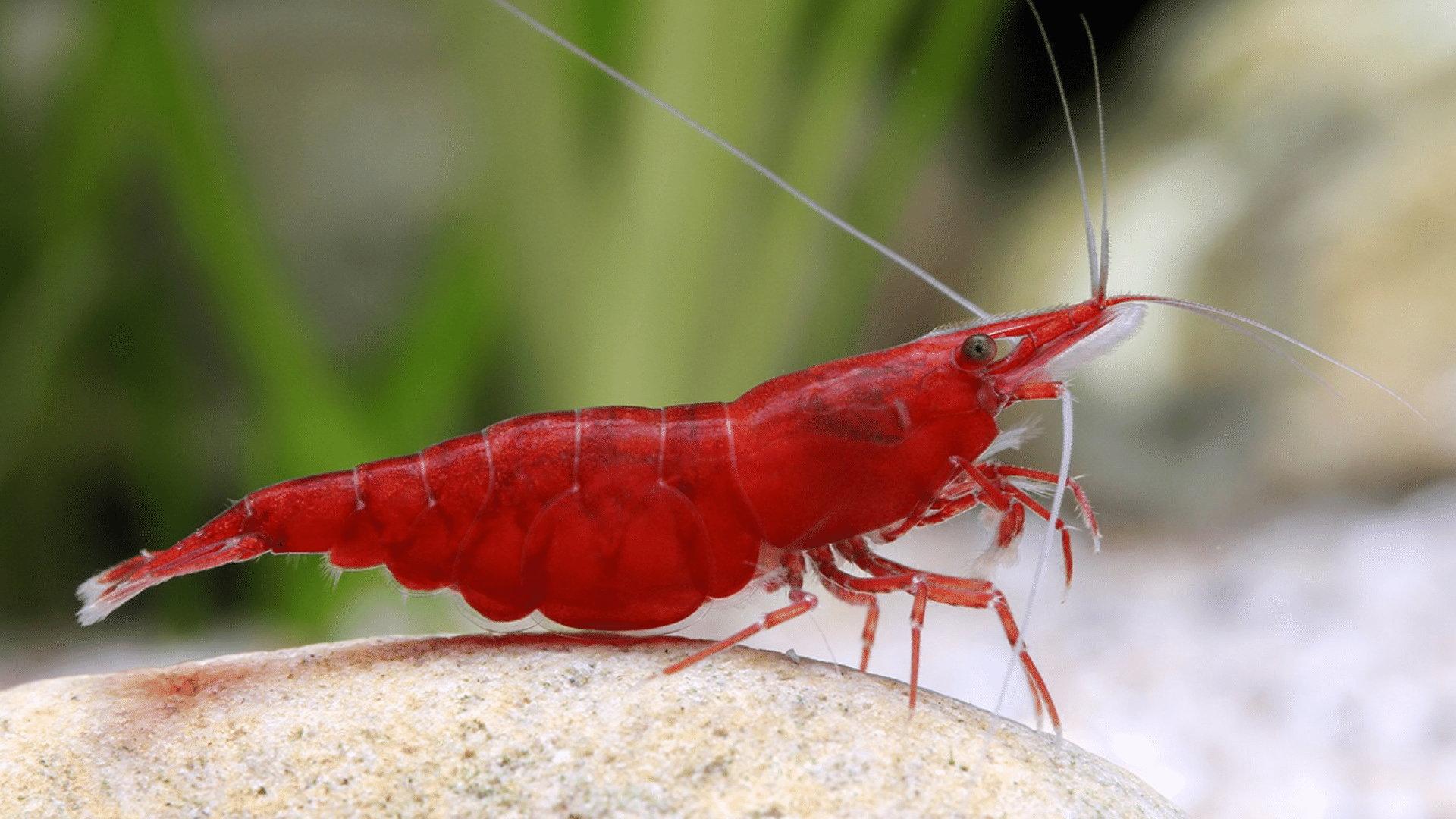
Cherry shrimp are bright red, active, and one of the easiest shrimp species to keep. They help control algae, clean leftover food, and add a splash of color to any aquarium.
These tiny creatures prefer planted tanks where they can hide and graze on surfaces.
They stay peaceful, get along with most fish, and reproduce easily if the water is clean and stable. Over time, a small group can turn into a lively colony that keeps your tank healthy and balanced.
- Diet: Algae, biofilm, blanched vegetables, shrimp pellets
- Lifespan: 1–2 years
- Water Temperature: 72–78°F (22–26°C)
- Water pH Level: 6.5–8.0
7. Amano Shrimp
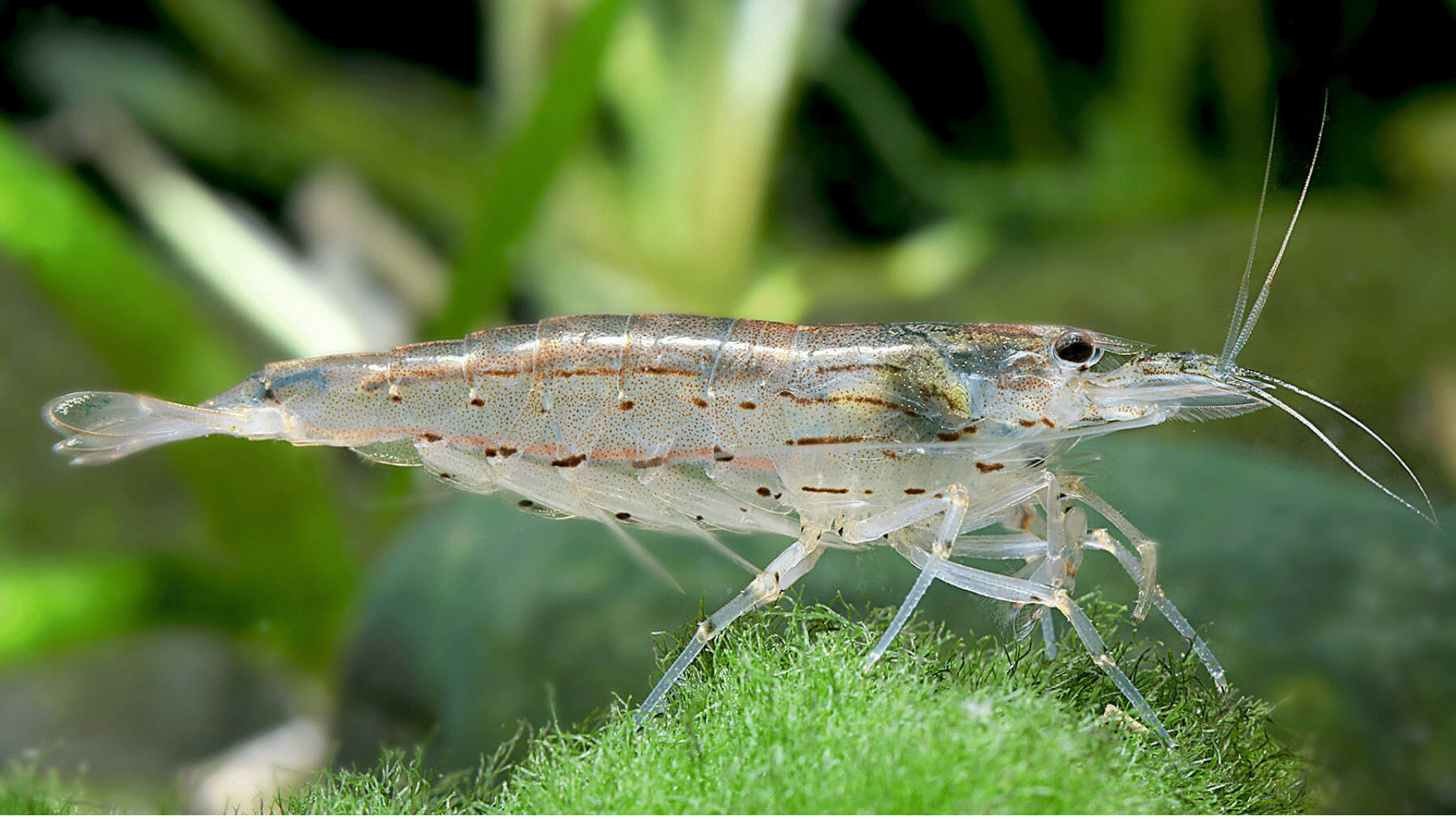
Amano shrimp are excellent tank cleaners known for eating many types of algae and waste. They are larger than most shrimp and calm in nature, making them perfect for mixed tanks.
You’ll often see them moving across plants and decorations in search of food. They don’t breed in freshwater, so their numbers are easy to control.
Strong water flow and a steady environment help them stay healthy and active for years.
- Diet: Algae, biofilm, blanched spinach, algae wafers
- Lifespan: 2–3 years
- Water Temperature: 70–80°F (21–27°C)
- Water pH Level: 6.5–7.5
8. Ghost Shrimp
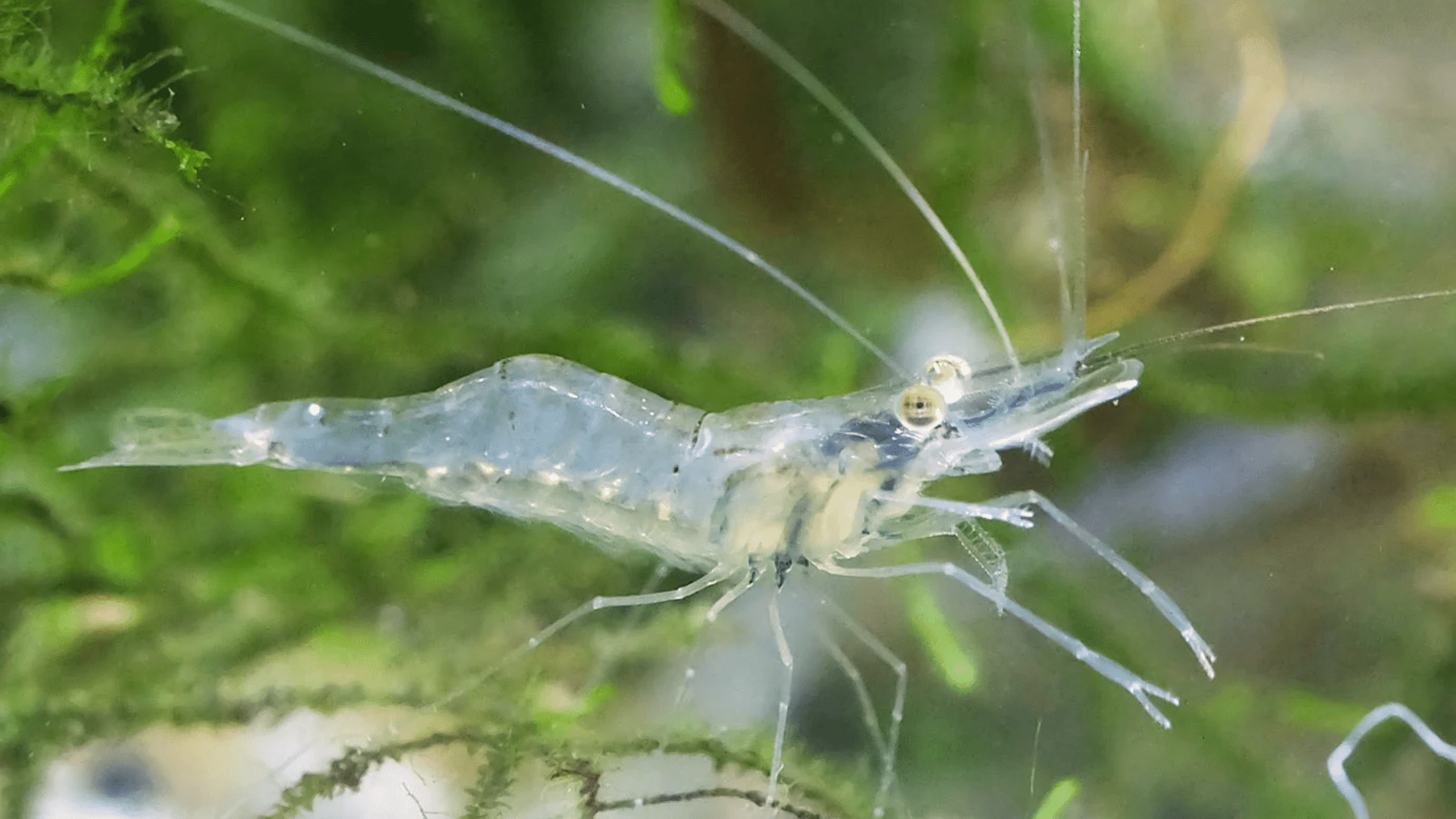
Ghost shrimp are clear-bodied and fun to watch as they move through the tank.
Their see-through look lets you observe how they eat and move, which makes them interesting for kids and beginners.
They act as natural cleaners, picking up leftover food and debris from the substrate. Ghost shrimp are peaceful, active during the day, and prefer tanks with gentle filtration and hiding spots.
- Diet: Algae, fish flakes, pellets, leftover food
- Lifespan: 1 year
- Water Temperature: 65–82°F (18–28°C)
- Water pH Level: 7.0–8.0
9. Blue Velvet Shrimp
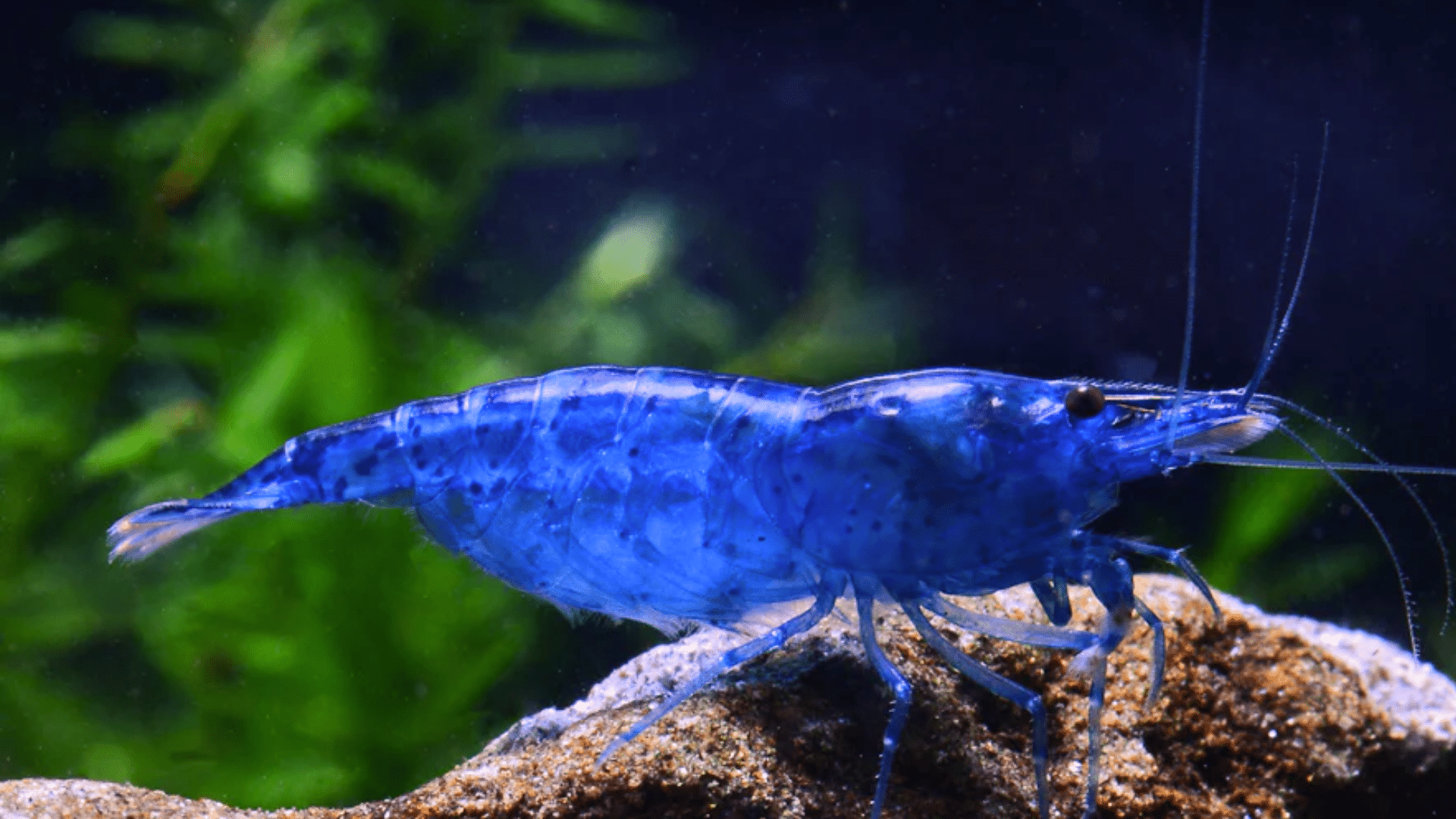
Blue velvet shrimp stand out with their deep blue color that looks beautiful against green plants. They are calm, social, and perfect for planted tanks.
These shrimp help control algae and eat leftover food, keeping the water clear.
They prefer a quiet environment with steady water conditions and soft lighting. When kept in groups, they stay active and visible throughout the tank.
- Diet: Algae, biofilm, shrimp pellets, blanched zucchini
- Lifespan: 1–2 years
- Water Temperature: 72–78°F (22–26°C)
- Water pH Level: 6.8–7.8
10. Bamboo Shrimp
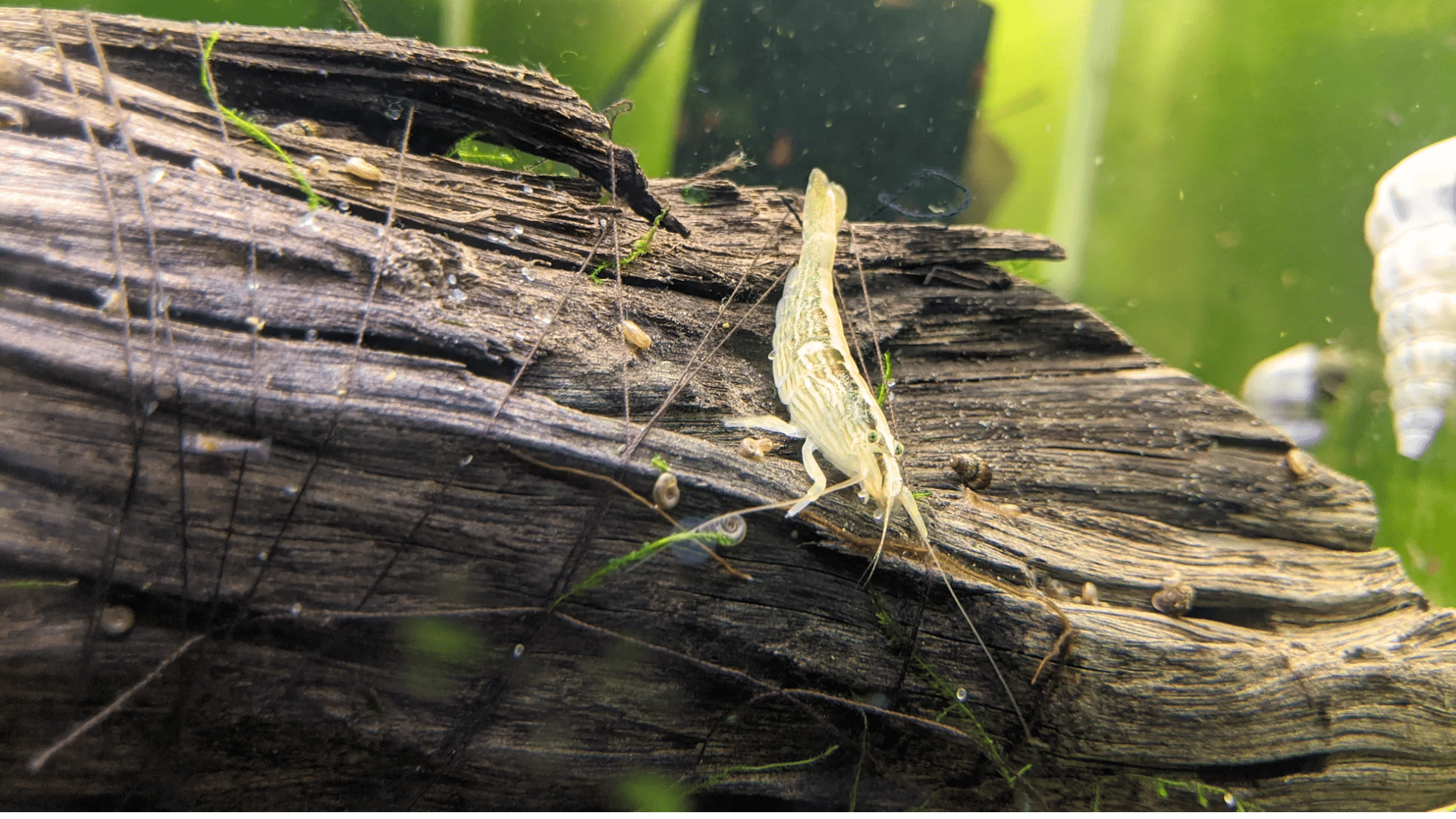
Bamboo shrimp are unique because they catch tiny food particles from the water using fan-like arms.
They prefer tanks with a steady water flow and perches like rocks or driftwood where they can sit and feed.
These calm shrimp are larger than most freshwater types and don’t bother other tank mates. They do best in mature tanks with clean, well-circulated water.
- Diet: Floating micro foods, crushed flakes, powdered shrimp food
- Lifespan: 2–3 years
- Water Temperature: 72–82°F (22–28°C)
- Water pH Level: 6.5–7.5
Top Non-Fish Aquarium Pets: Crabs
Crabs add personality and energy to aquariums with their playful movements and curious nature. They’re fun to watch and help keep the tank tidy by eating leftover food.
11. Fiddler Crab
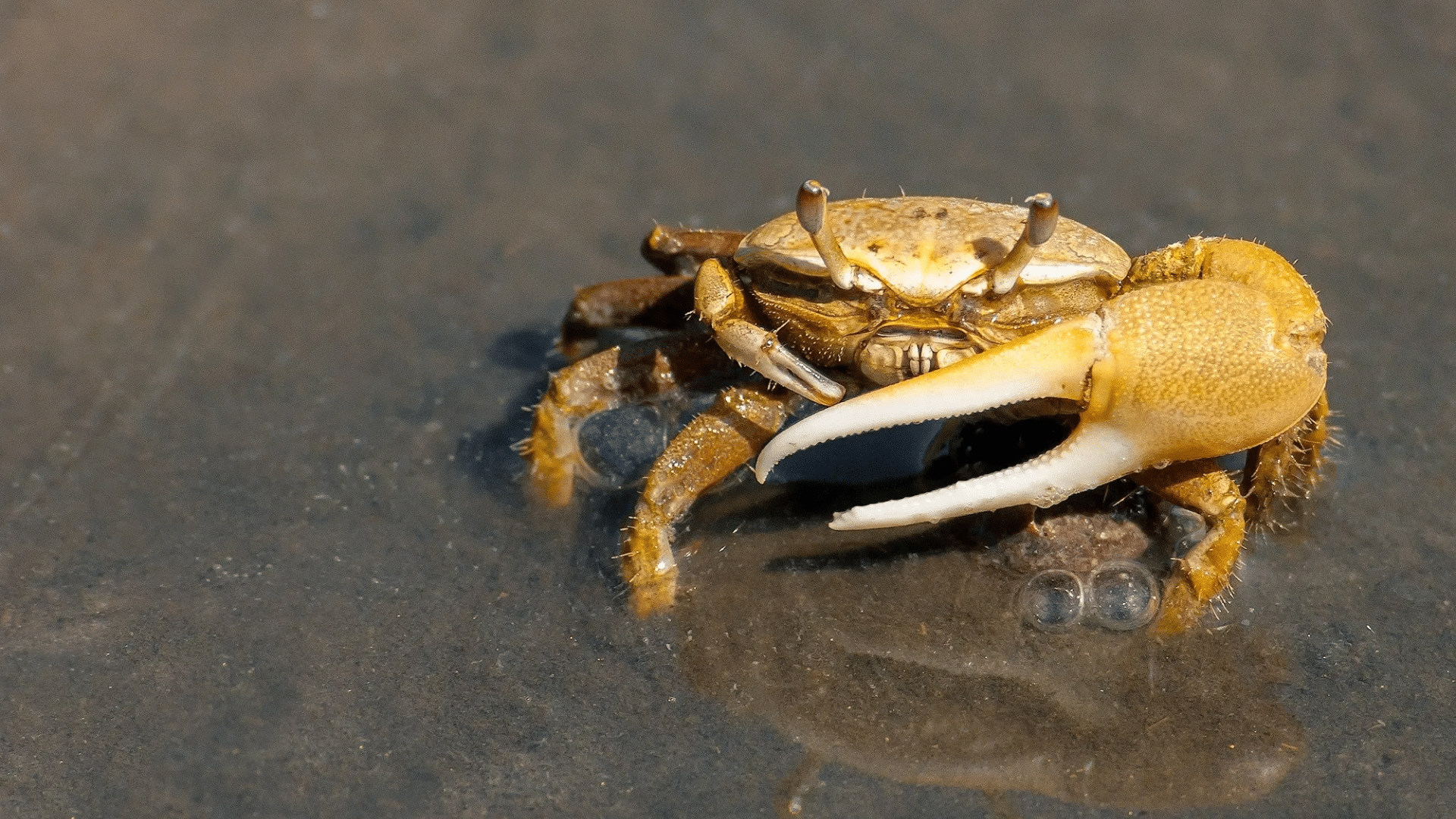
Fiddler crabs are small, semi-aquatic crabs with one oversized claw that makes them easy to recognize.
They’re lively and enjoy moving between land and water areas, so a mix of both is ideal for them. These crabs are social and fun to watch as they dig and wave their claws.
They need a secure tank with access to dry spots and shallow water. Since they can be territorial, give them enough space to avoid fights.
- Diet: Algae, sinking pellets, bloodworms, small bits of vegetables
- Lifespan: 2–3 years
- Water Temperature: 75–82°F (24–28°C)
- Water pH Level: 7.5–8.5
12. Red Claw Crab
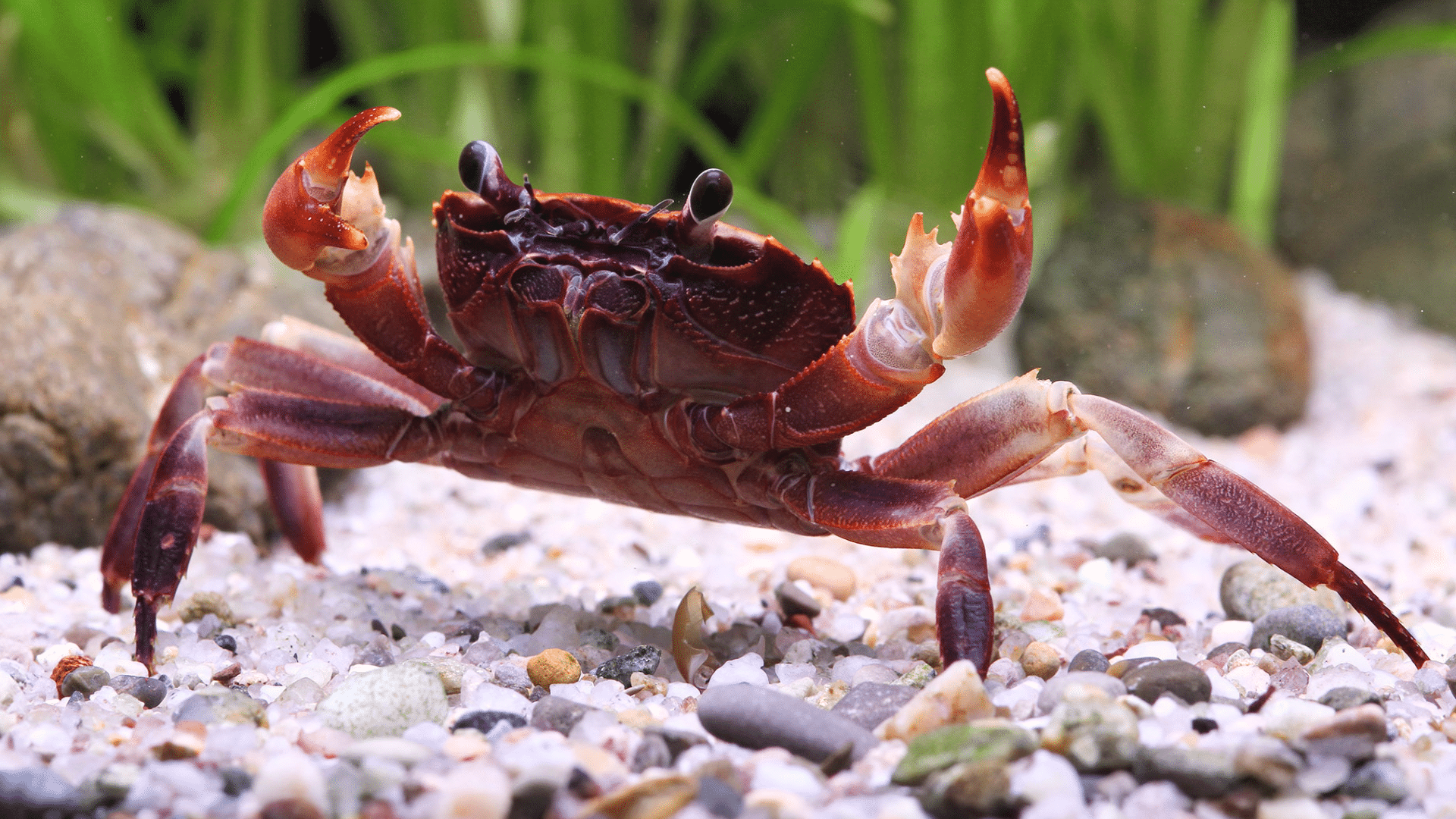
Red claw crabs are colorful crustaceans known for their red-tipped claws and curious nature. They prefer brackish water with hiding spots like caves or driftwood.
These crabs spend time both in and out of water, so they need a partly dry area in the tank.
They can be slightly territorial, so it’s best to keep a small group in a spacious setup. Clean water and a tight lid are important since they like to climb.
- Diet: Algae, sinking pellets, insects, blanched vegetables
- Lifespan: 2–3 years
- Water Temperature: 74–80°F (23–27°C)
- Water pH Level: 7.5–8.5
13. Thai Micro Crab
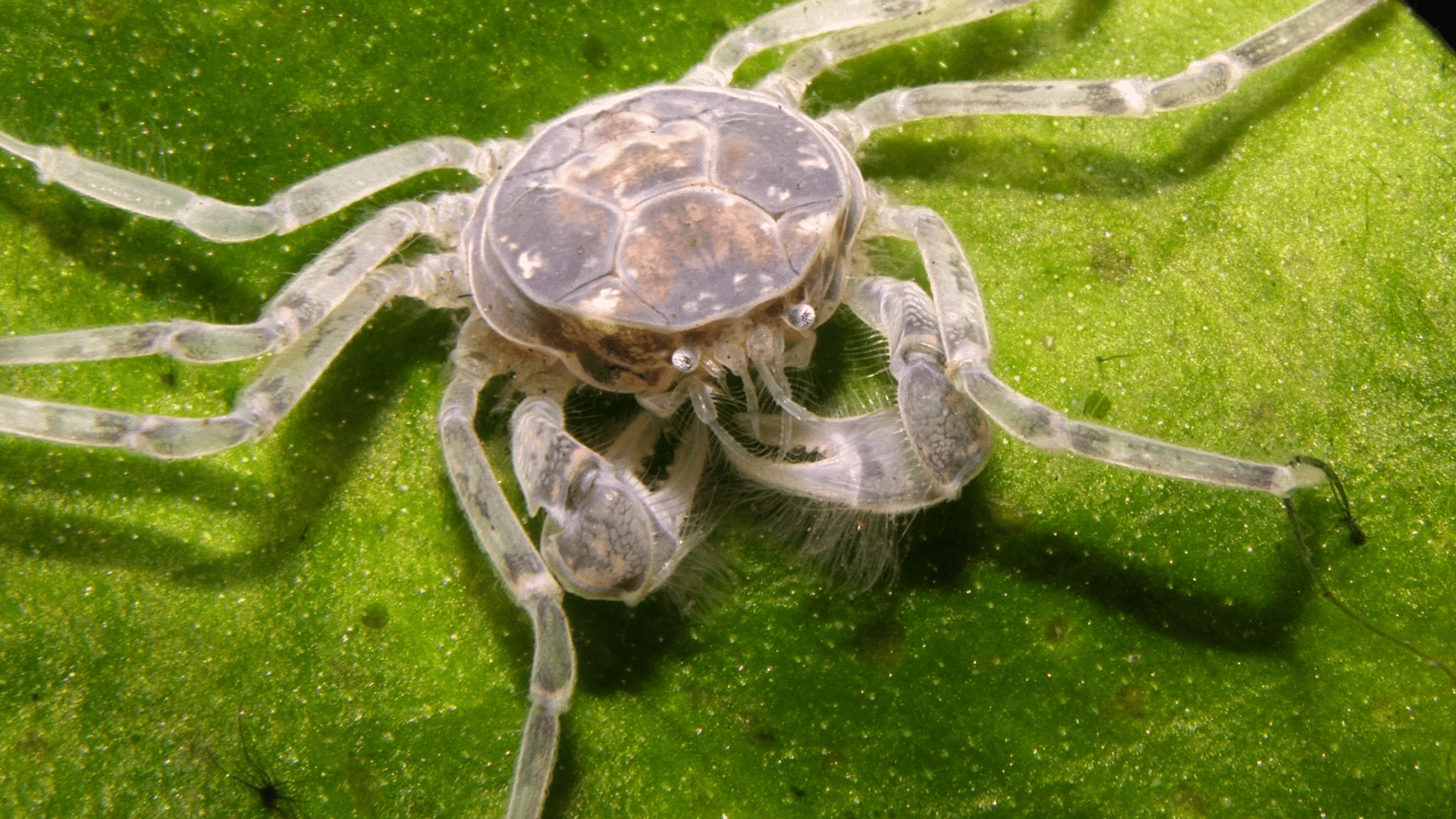
Thai micro crabs are tiny, peaceful crabs that stay fully underwater. They’re perfect for small aquariums and community tanks.
With their delicate legs and calm behavior, they prefer quiet, planted tanks where they can stay near roots or driftwood. They are shy but helpful cleaners that eat tiny food particles floating in the water.
Since they’re sensitive, stable water conditions are a must.
- Diet: Micro foods, powdered shrimp pellets, algae, biofilm
- Lifespan: 1–2 years
- Water Temperature: 72–82°F (22–28°C)
- Water pH Level: 6.5–7.5
14. Panther Crab
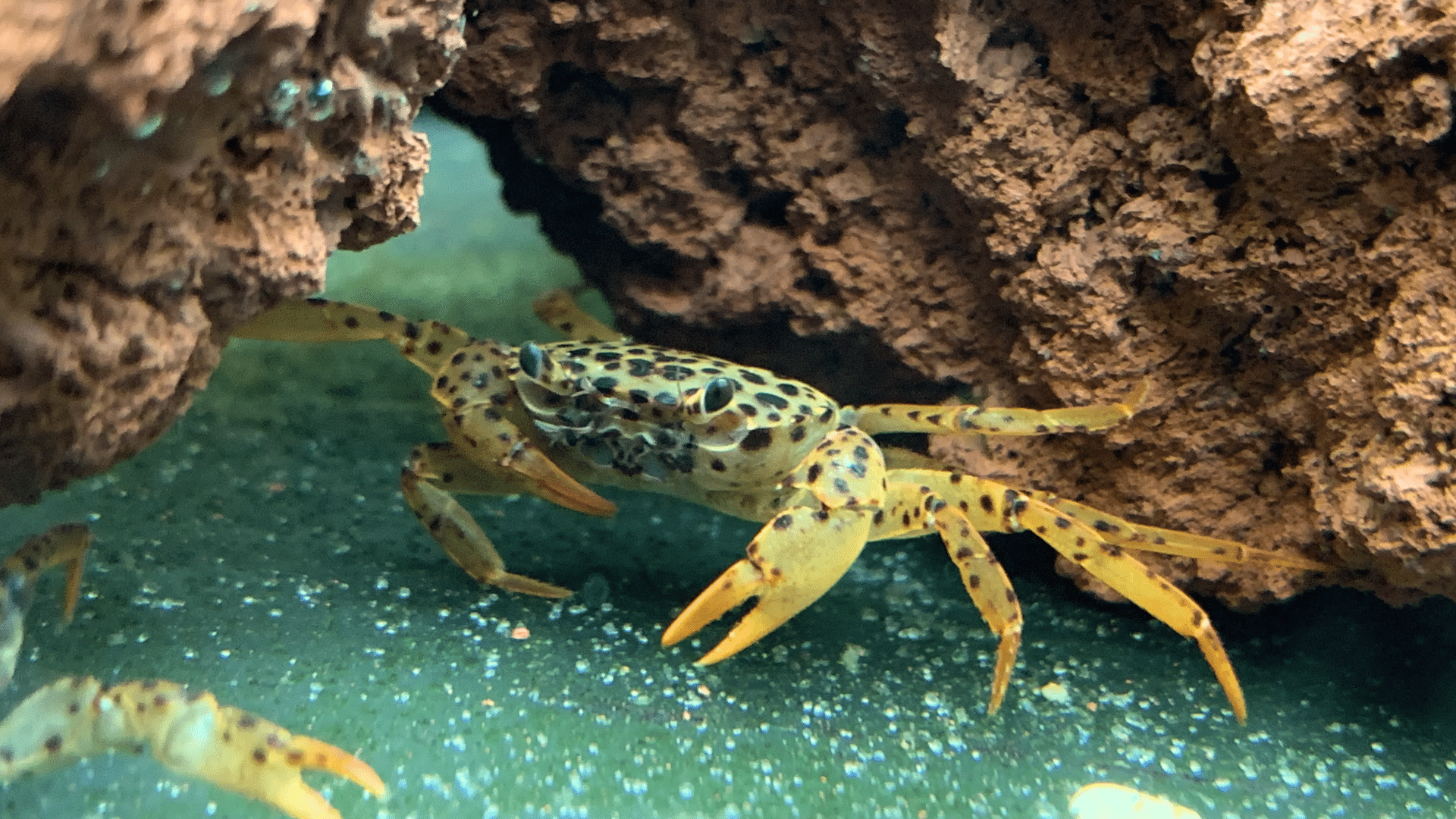
Panther crabs have spotted shells that resemble a leopard’s pattern, making them one of the most eye-catching freshwater crabs.
They’re active and curious but can be territorial, so they need plenty of space and hiding spots.
These crabs prefer sandy bottoms and will dig small burrows.
While they live mostly underwater, they appreciate areas to rest above water, too. Good filtration and a balanced diet help keep their bright colors.
- Diet: Sinking pellets, bloodworms, vegetables, shrimp
- Lifespan: 3–5 years
- Water Temperature: 75–82°F (24–28°C)
- Water pH Level: 7.0–8.0
15. Vampire Crab
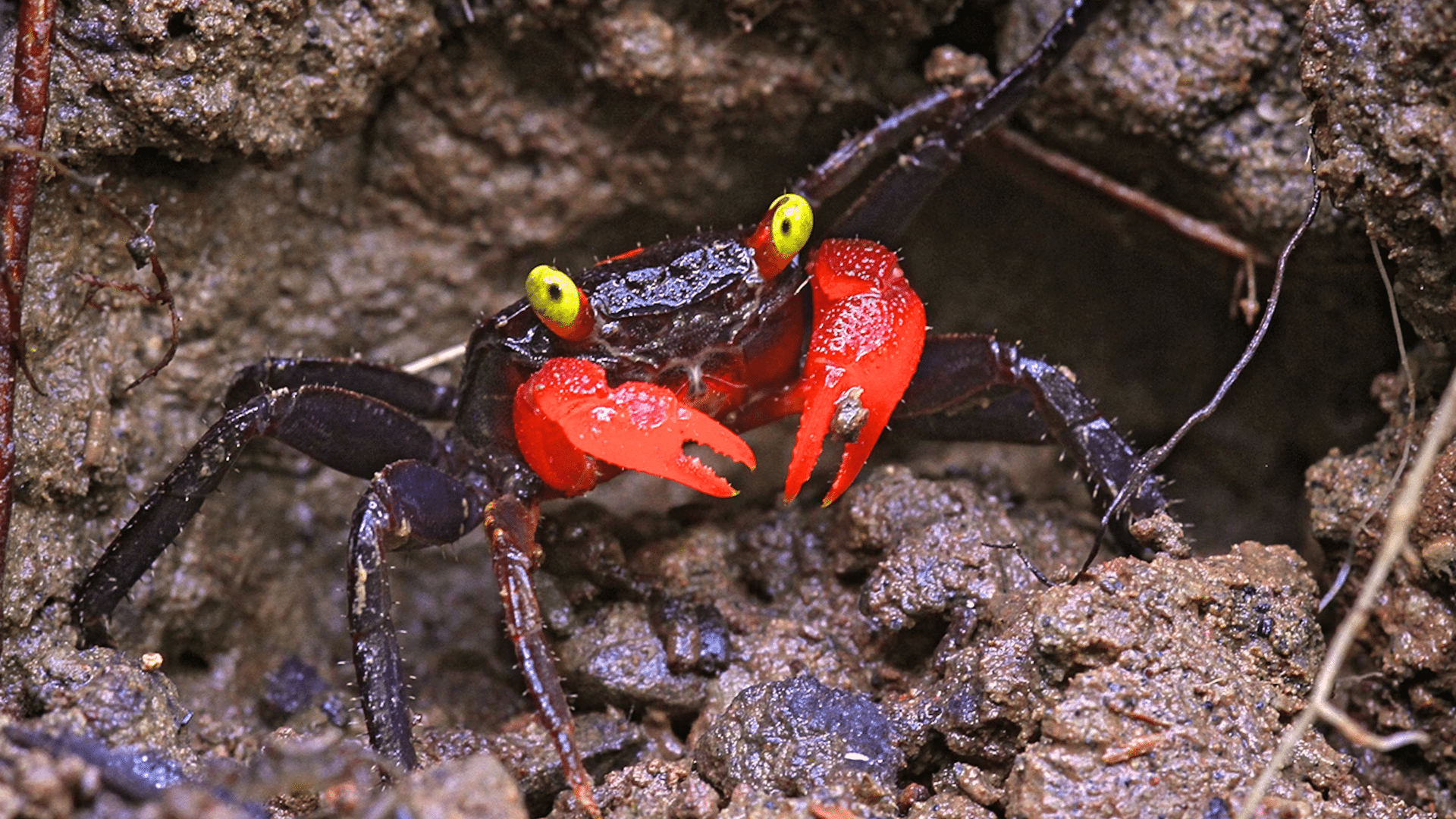
Vampire crabs are striking pets with purple shells, orange claws, and glowing yellow eyes. They’re small, semi-terrestrial crabs that enjoy both water and land areas in their setup.
Calm and social, they can live in groups if the tank has enough space and hiding spots.
These crabs are scavengers that eat leftover food and help keep the tank clean. They prefer dim lighting and shallow water areas with plenty of cover.
- Diet: Insect larvae, algae wafers, small bits of vegetables
- Lifespan: 2–3 years
- Water Temperature: 75–82°F (24–28°C)
- Water pH Level: 7.2–8.0
Top Non-Fish Aquarium Pets: Frogs and Amphibians
Frogs and other amphibians bring a unique touch to aquariums with their calm movements and gentle behavior. They’re easy to care for and add variety beyond typical fish setups.
16. African Dwarf Frog
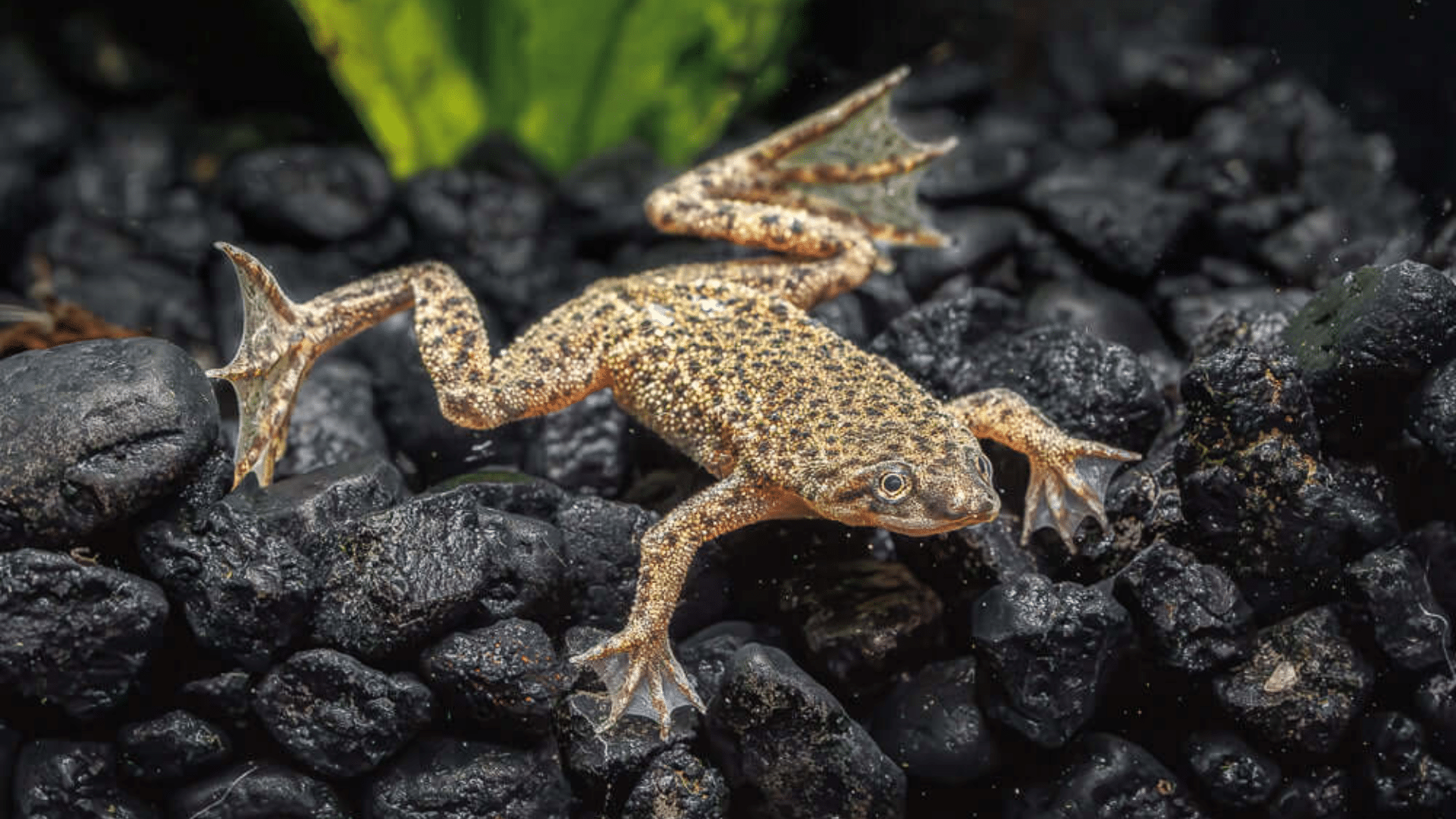
African dwarf frogs are fully aquatic and great for small tanks. They’re gentle, social creatures that spend most of their time swimming near the bottom or resting on plants.
These frogs breathe air at the surface, so keep the water shallow enough for easy access.
They do best in calm tanks without sharp decorations. Their simple care needs and peaceful nature make them perfect for beginners.
- Diet: Bloodworms, brine shrimp, sinking pellets
- Lifespan: 5–8 years
- Water Temperature: 72–78°F (22–26°C)
- Water pH Level: 6.5–7.8
17. African Clawed Frog
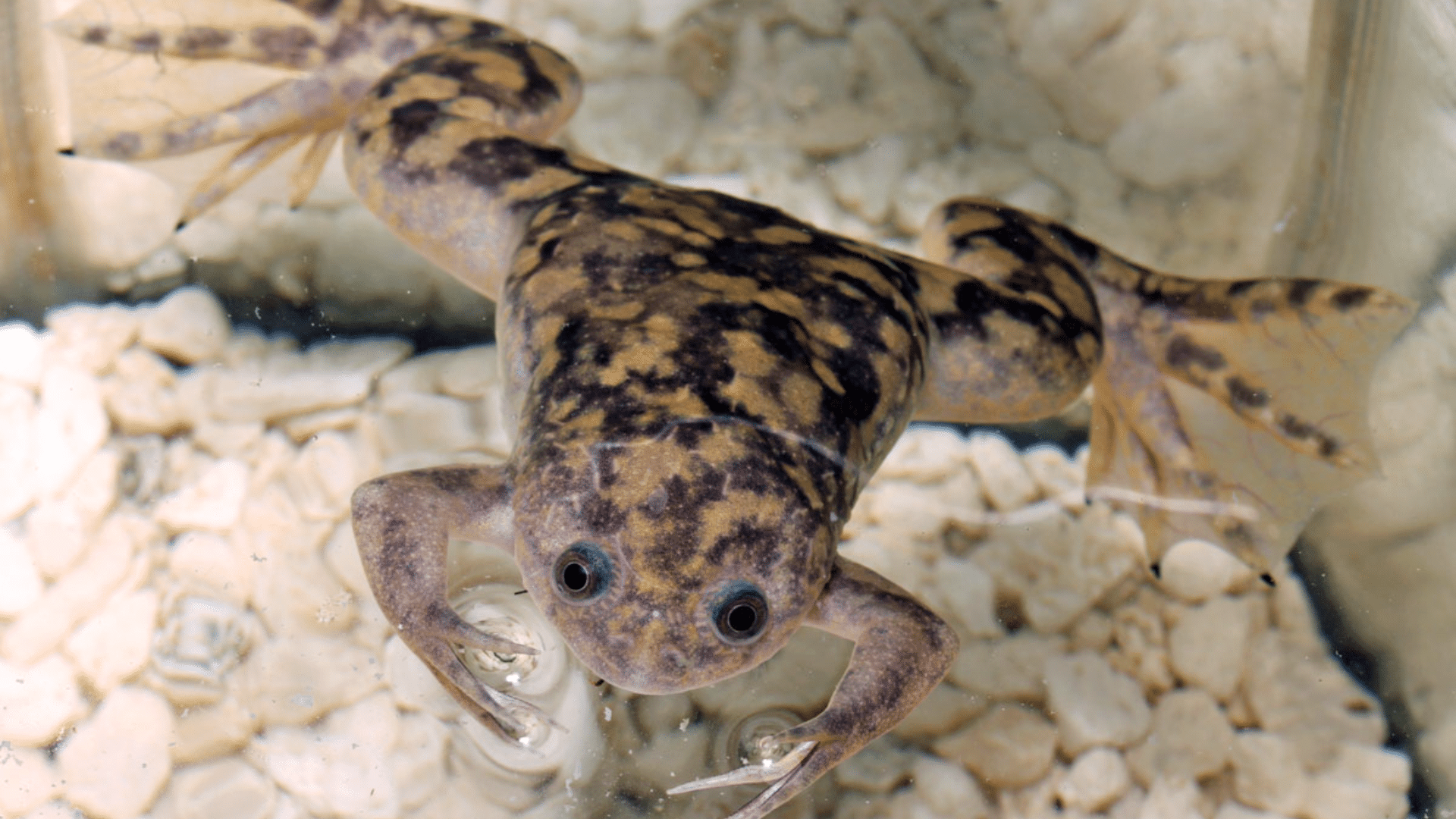
African clawed frogs are larger and more active than dwarf frogs. They have clawed front feet, which they use to grab food, and can live many years with good care.
These frogs prefer tanks with plenty of swimming space and a secure lid since they can jump. They are strong eaters and need meaty foods rather than flakes.
Because they can be territorial, they’re best kept alone or with their own kind.
- Diet: Bloodworms, earthworms, pellets, small fish
- Lifespan: 10–15 years
- Water Temperature: 68–77°F (20–25°C)
- Water pH Level: 6.5–8.0
18. Fire-Bellied Toad
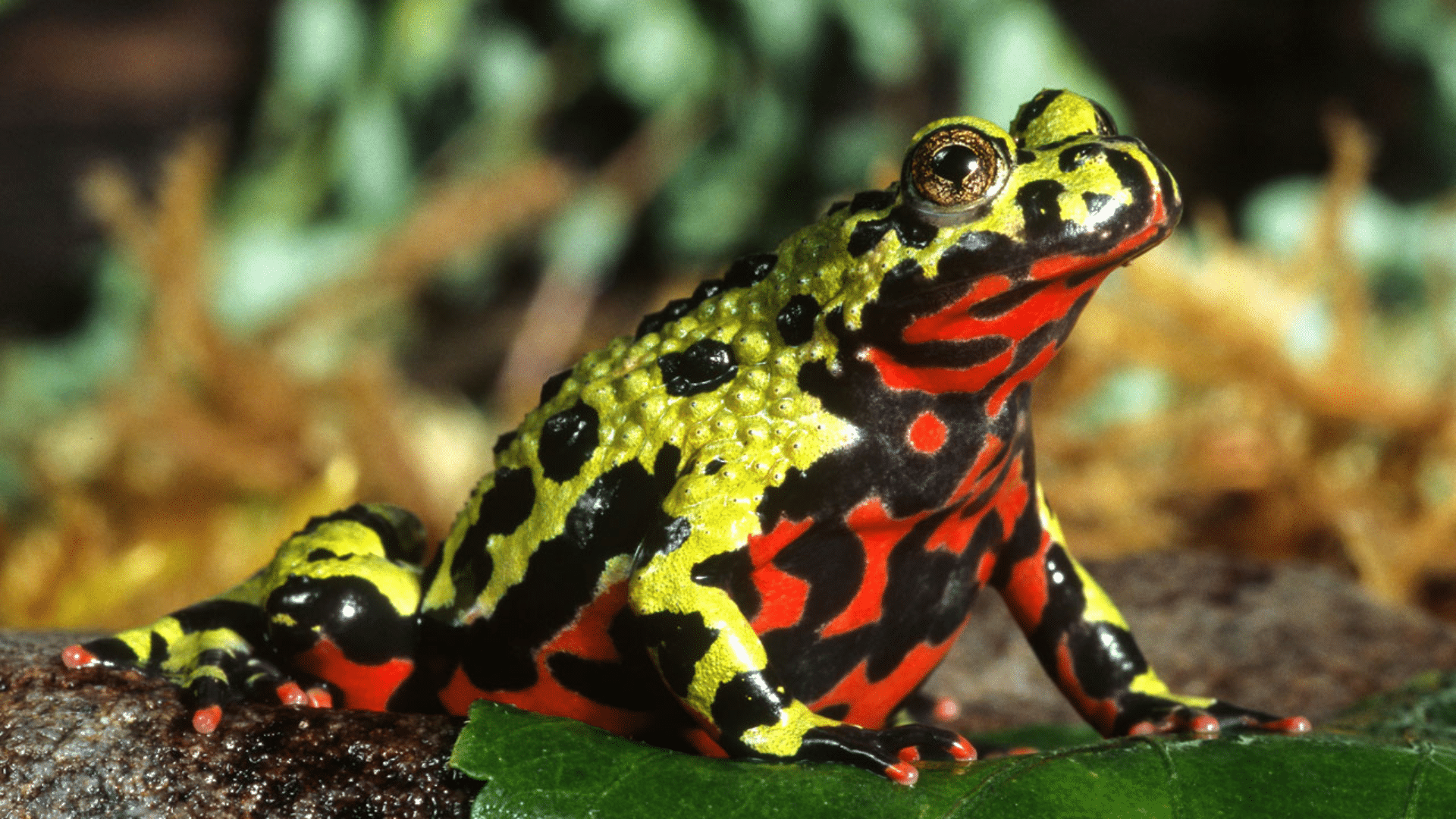
Fire-bellied toads are known for their bright green backs and orange or red bellies. They live in both water and on land, so they need a semi-aquatic setup with smooth rocks and shallow water.
These toads are active during the day and have a soft croak that’s easy to recognize.
They do well in groups if given space and clean water. Their colorful look and easy care make them a favorite among amphibian keepers.
- Diet: Crickets, bloodworms, brine shrimp
- Lifespan: 10–15 years
- Water Temperature: 72–78°F (22–26°C)
- Water pH Level: 6.5–7.5
19. Axolotl
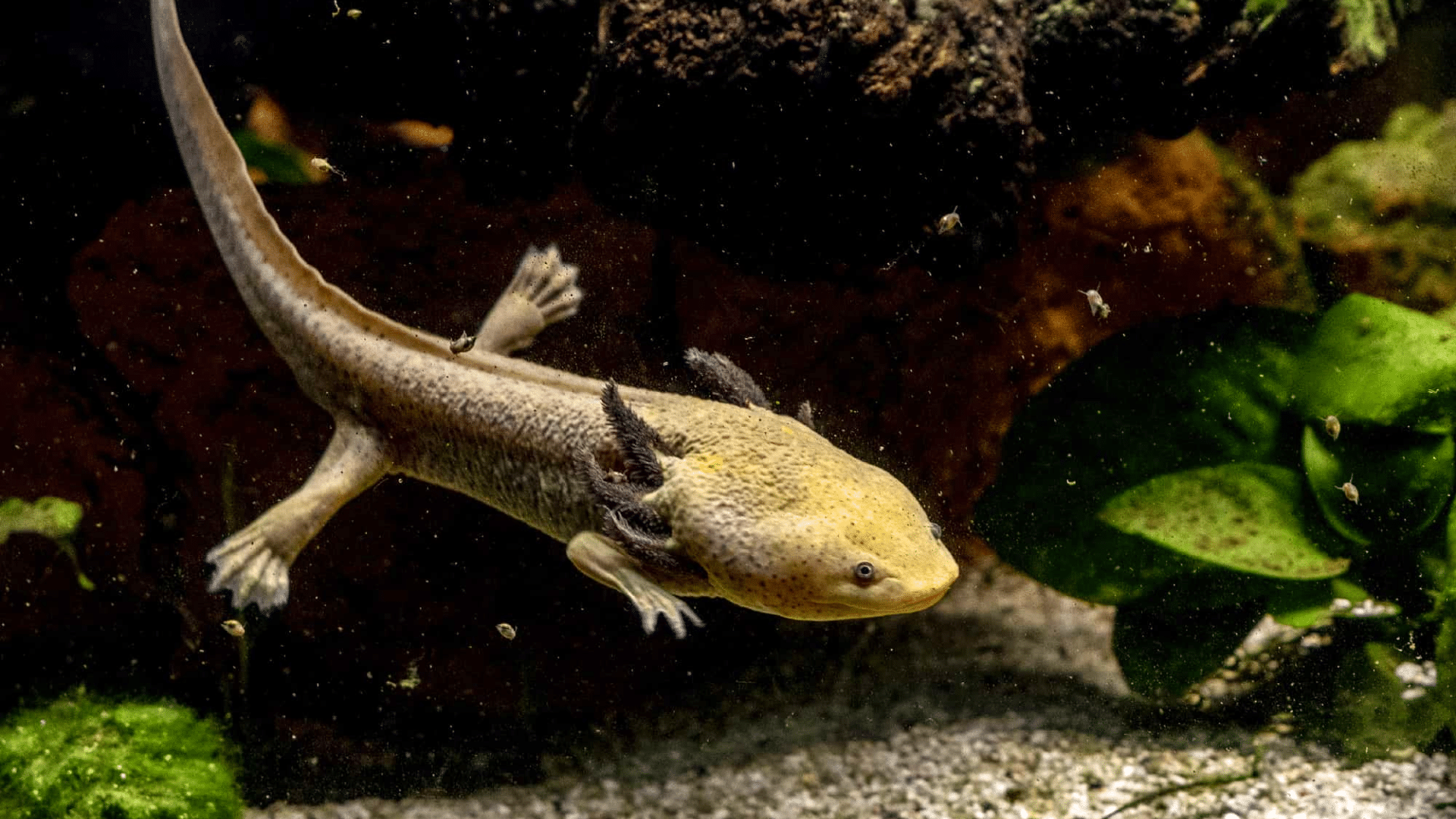
Axolotls are unique amphibians that stay in their larval form for life, keeping their gills and tail fins. They have a friendly look and come in colors like white, gold, and black.
They prefer cool, calm water with a gentle flow and should be kept away from warm setups.
Axolotls are curious and interactive, making them popular among aquarium hobbyists. They need soft sand or bare bottoms since gravel can be harmful if swallowed.
- Diet: Earthworms, bloodworms, sinking pellets
- Lifespan: 10–15 years
- Water Temperature: 60–68°F (16–20°C)
- Water pH Level: 6.5–8.0
20. Newt
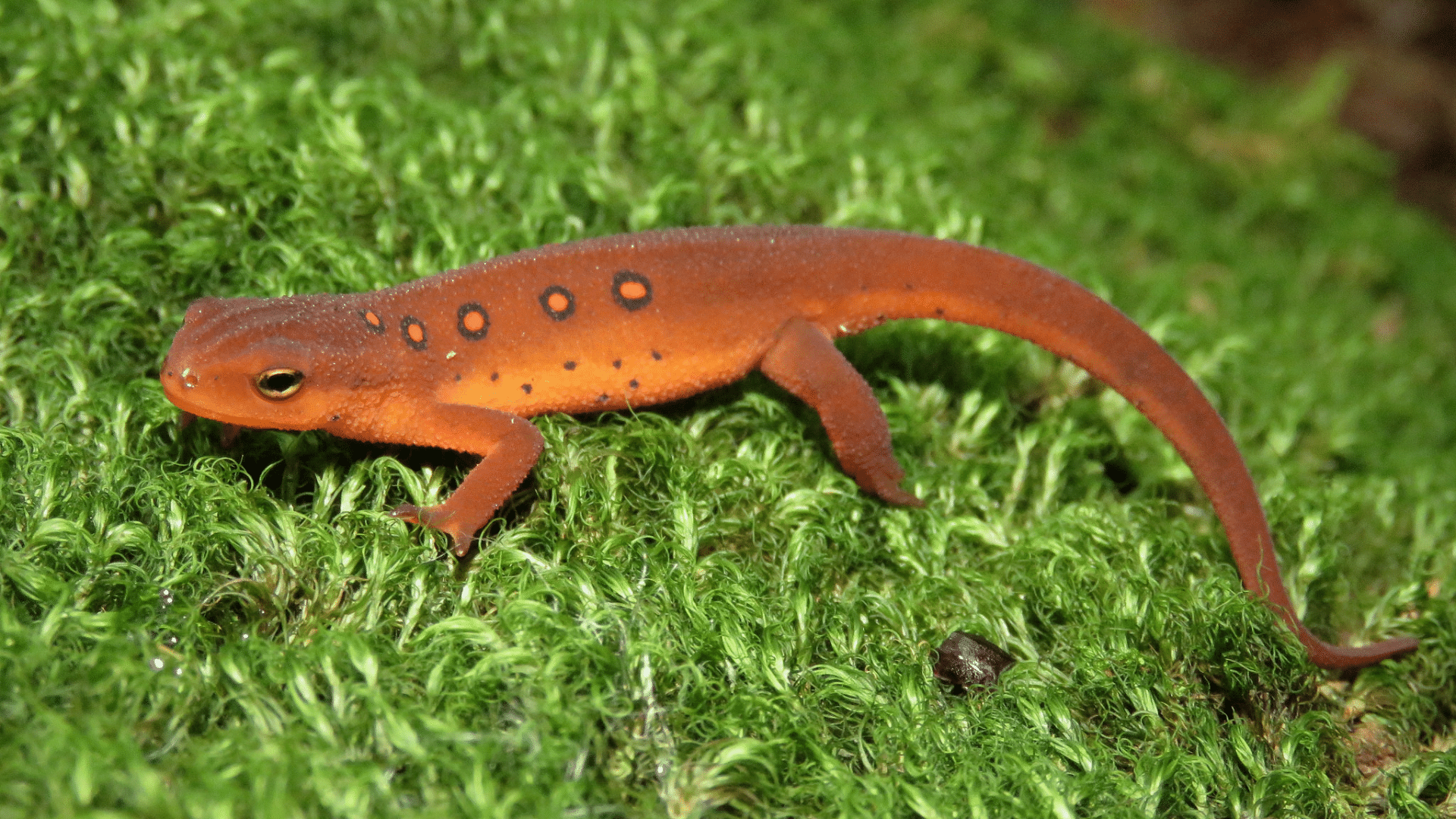
Newts are small, calm amphibians that enjoy both swimming and resting in land areas.
They prefer tanks with gentle water flow, smooth rocks, and plants for cover. Many species are hardy and easy to keep with basic care.
Newts shed their skin often, so clean water helps prevent infections. They can live with other peaceful species if given space and hiding spots.
- Diet: Bloodworms, brine shrimp, small insects
- Lifespan: 6–10 years
- Water Temperature: 60–72°F (16–22°C)
- Water pH Level: 6.5–7.5
Top Non-Fish Aquarium Pets: Turtles
Turtles are long-lived, interesting pets that combine swimming and basking habits. They add life and character to aquariums while staying relatively easy to care for with the right setup.
21. Musk Turtle
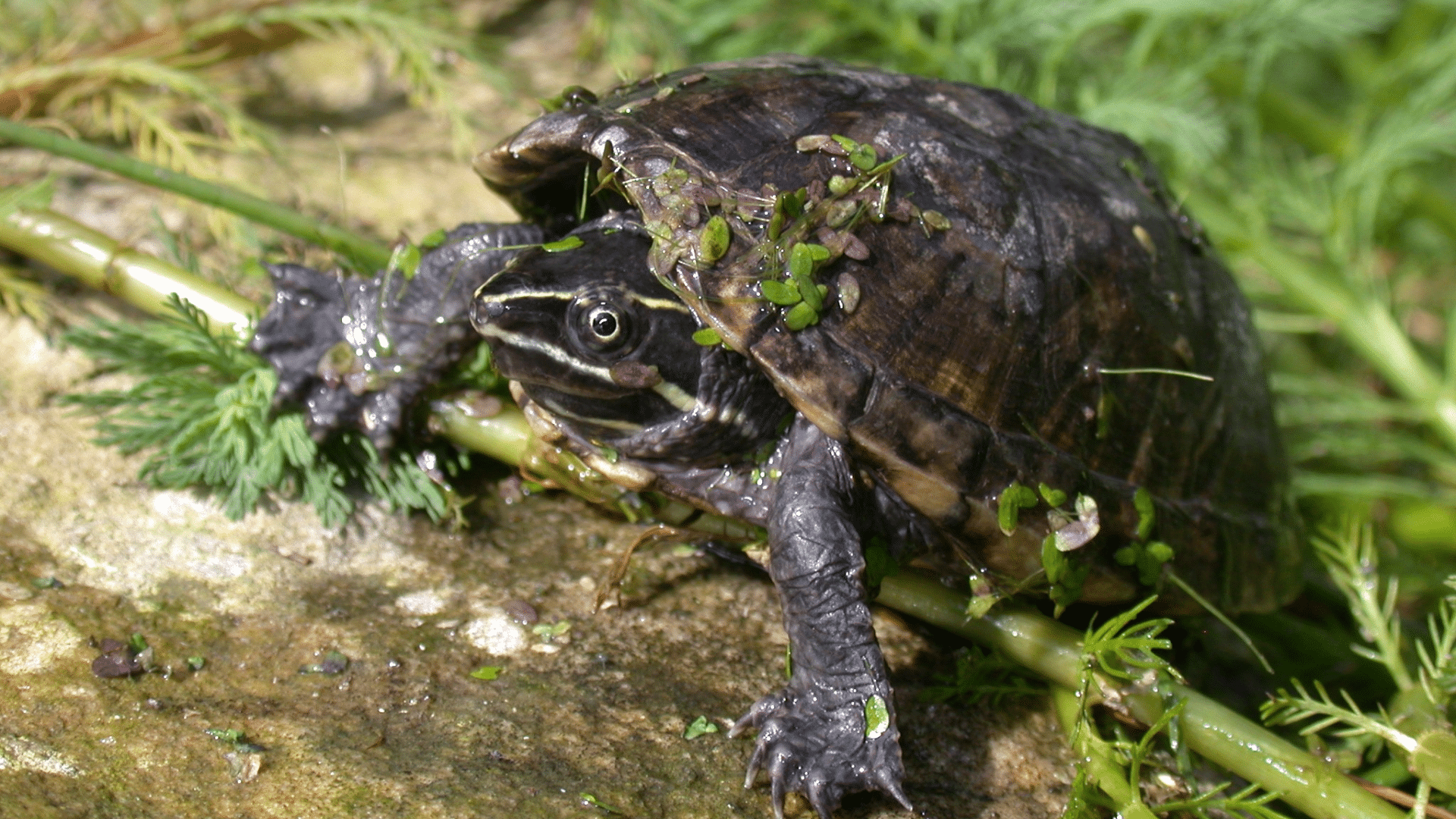
Musk turtles are small, hardy turtles that adapt well to home aquariums. They spend most of their time underwater but enjoy climbing onto rocks to rest.
Known for their calm nature, they’re easy to care for if given clean water and a basking spot with a gentle heat source.
These turtles are bottom-dwellers, so they like tanks with hiding spots and smooth gravel. Regular water changes and a strong filter keep them healthy.
- Diet: Pellets, worms, insects, small fish
- Lifespan: 30–50 years
- Water Temperature: 72–78°F (22–26°C)
- Water pH Level: 6.5–8.0
22. Painted Turtle
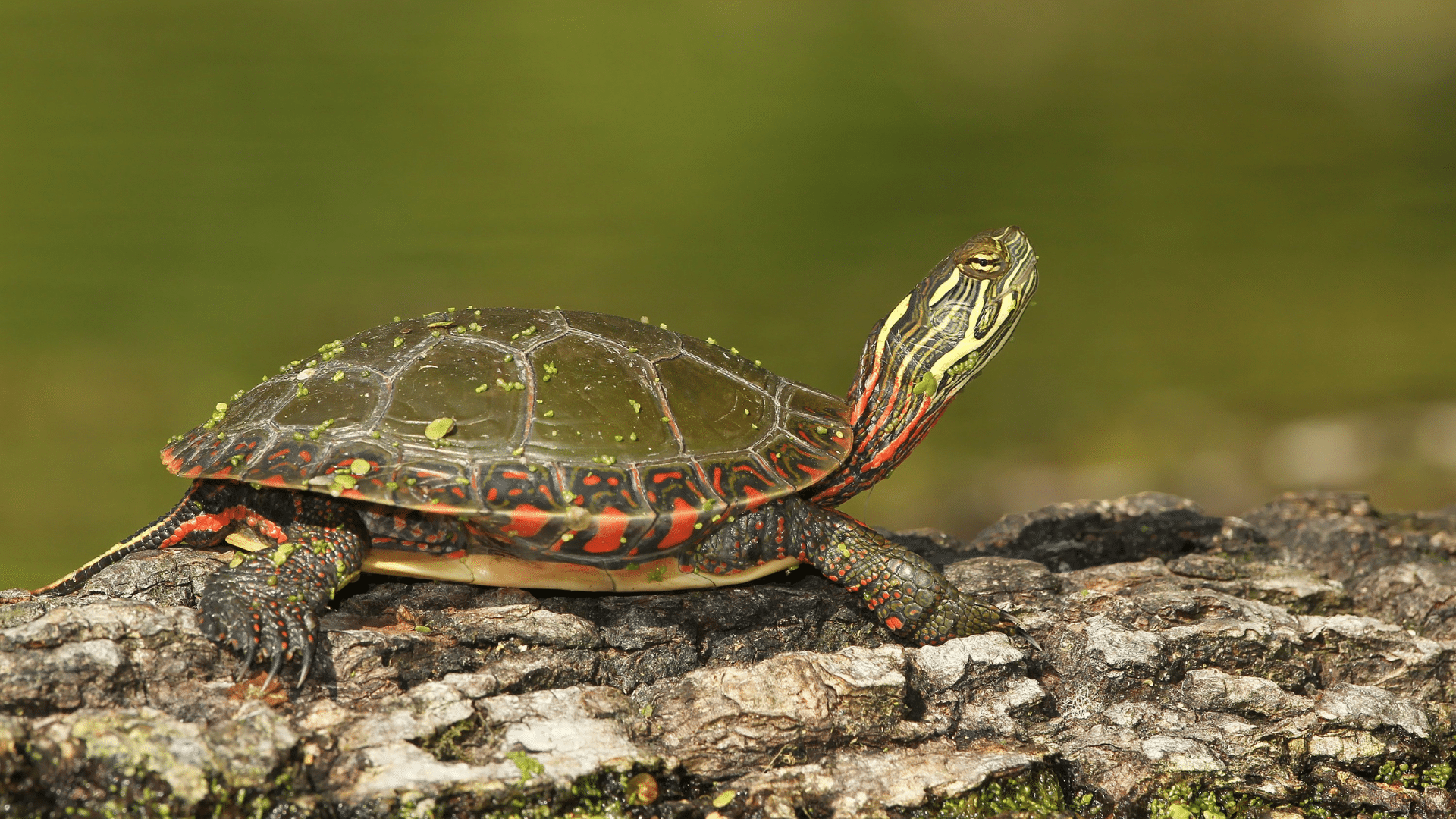
Painted turtles are one of the most colorful freshwater turtles, with bright red and yellow markings on their shells.
They love swimming and basking, so a spacious tank with both land and water areas is ideal. These turtles are active during the day and need UVB lighting to stay healthy.
With regular feeding and clean water, they make long-lived and friendly pets.
- Diet: Aquatic plants, worms, pellets, small fish
- Lifespan: 20–30 years
- Water Temperature: 75–80°F (24–27°C)
- Water pH Level: 6.8–7.8
23. Red-Eared Slider
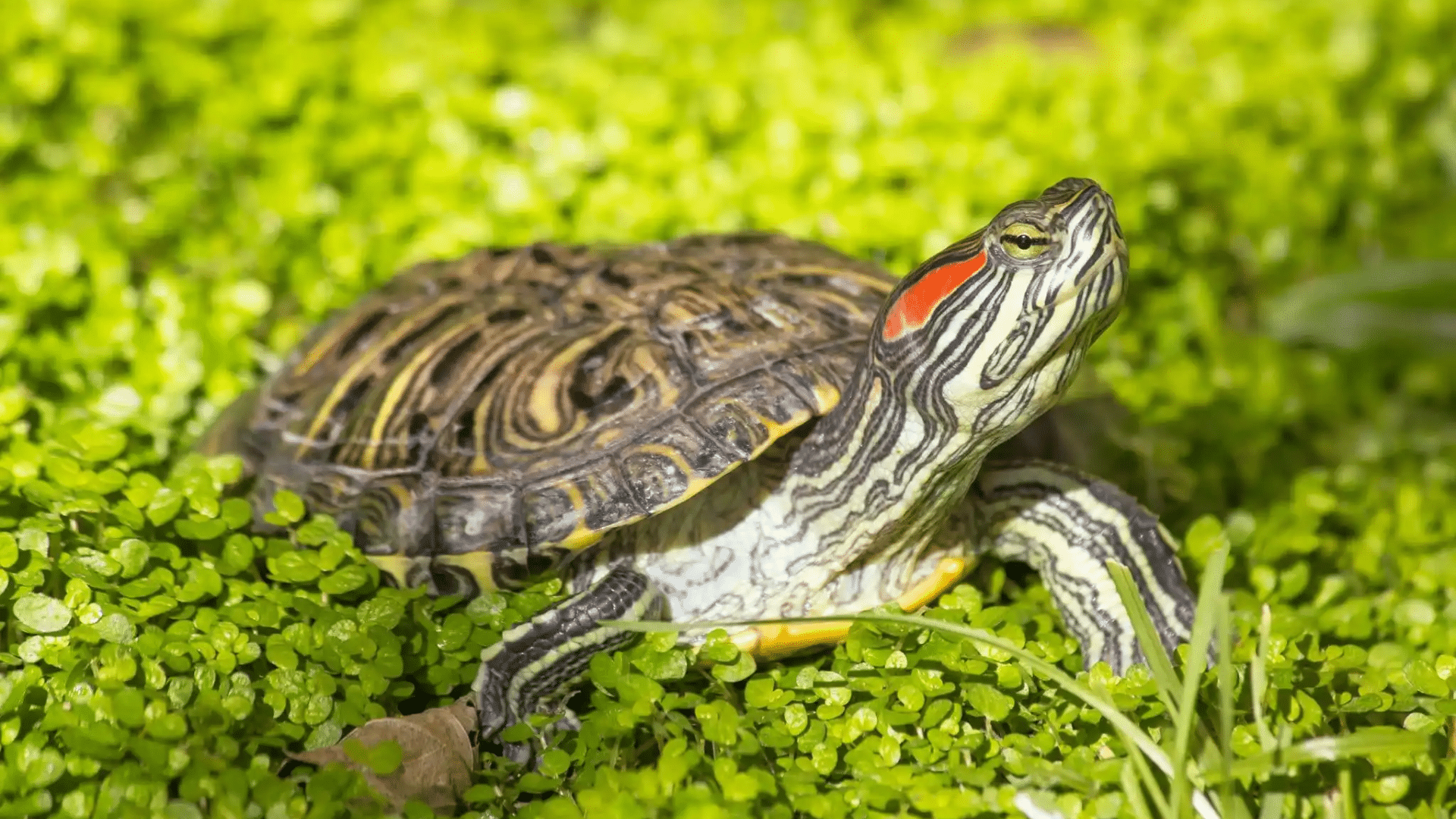
Red-eared sliders are one of the most popular pet turtles, recognized by the red stripes near their ears. They’re energetic swimmers and enjoy basking on warm rocks or platforms.
These turtles need clean water, strong filtration, and UVB lighting for proper shell growth.
They’re curious and social but require a large tank as they grow. Regular care keeps them healthy for decades.
- Diet: Pellets, leafy greens, crickets, worms
- Lifespan: 20–40 years
- Water Temperature: 75–85°F (24–29°C)
- Water pH Level: 6.5–7.5
24. Reeves Turtle
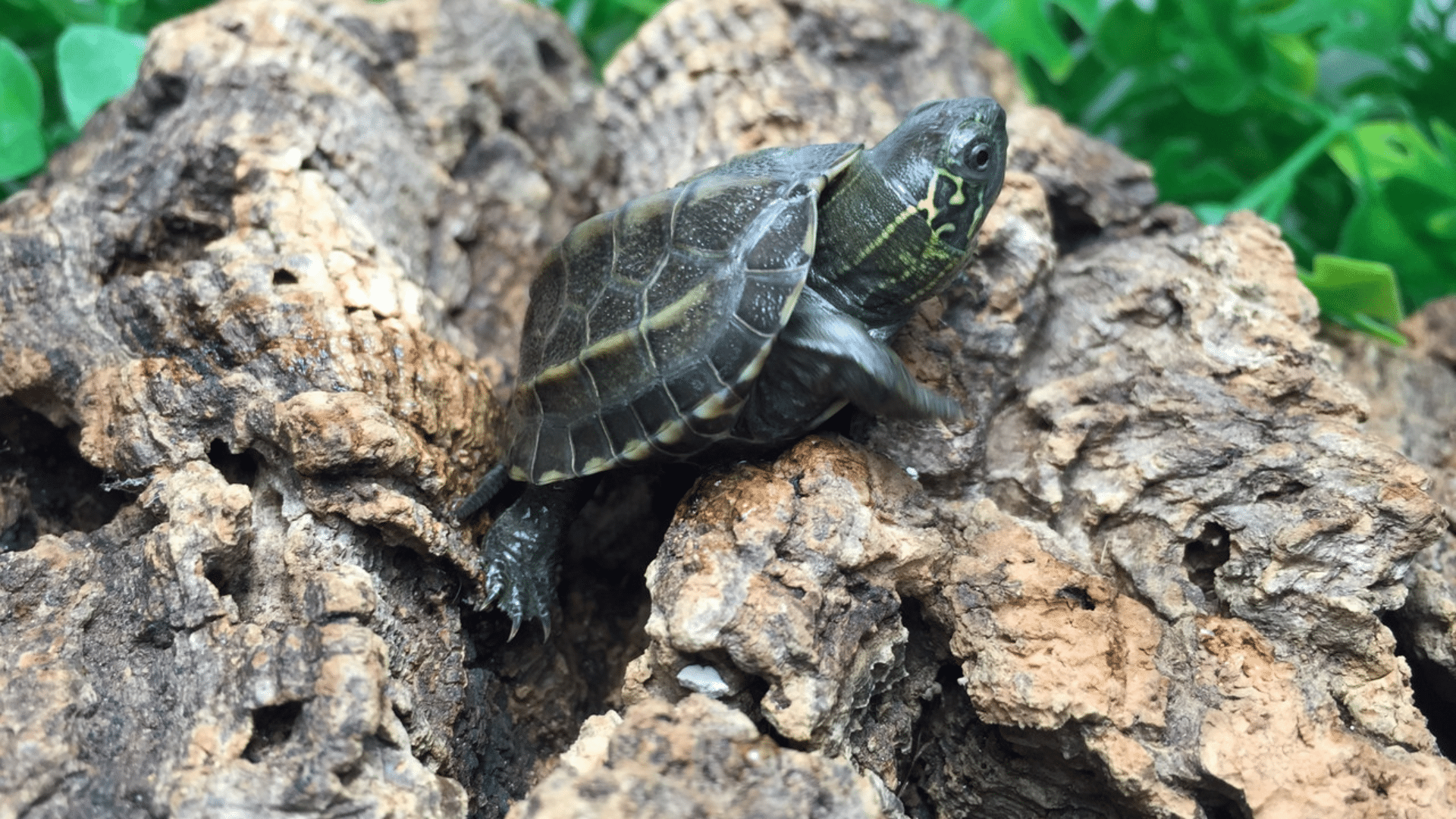
Reeves turtles are small, calm, and easy to care for, making them perfect for indoor aquariums. They have a square shell and enjoy both swimming and basking.
These turtles like shallow water with areas to climb and rest. They do well in peaceful environments and can recognize their owners over time.
A warm basking spot and clean water are key to keeping them active and healthy.
- Diet: Pellets, insects, shrimp, aquatic plants
- Lifespan: 15–25 years
- Water Temperature: 75–82°F (24–28°C)
- Water pH Level: 6.8–8.0
25. Spotted Turtle
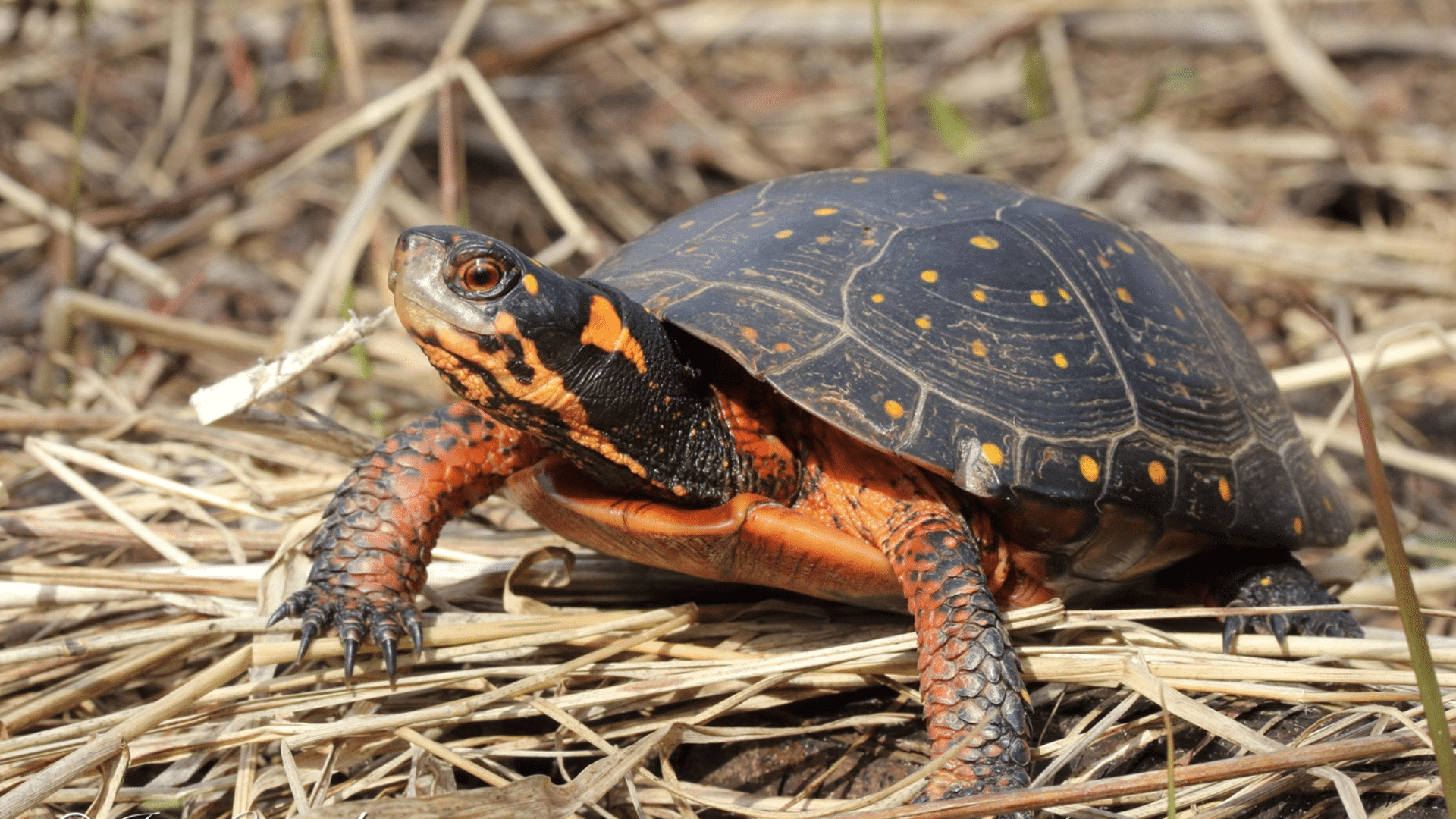
Spotted turtles are small and attractive, with yellow dots scattered across their dark shells. They’re semi-aquatic and spend time both swimming and basking.
These turtles enjoy shallow water, soft sand, and smooth rocks.
They’re gentle and easy to handle, but prefer stable temperatures and clean water. Spotted turtles are best kept alone or with other calm species.
- Diet: Insects, pellets, aquatic plants, worms
- Lifespan: 25–50 years
- Water Temperature: 70–80°F (21–27°C)
- Water pH Level: 6.5–7.5
Top Non-Fish Aquarium Pets: Other Unique Species
If you want something different for your aquarium, these unique species stand out. They each bring special roles, cleaning, filtering, or adding motion, which make your tank more balanced and interesting.
26. Freshwater Clam
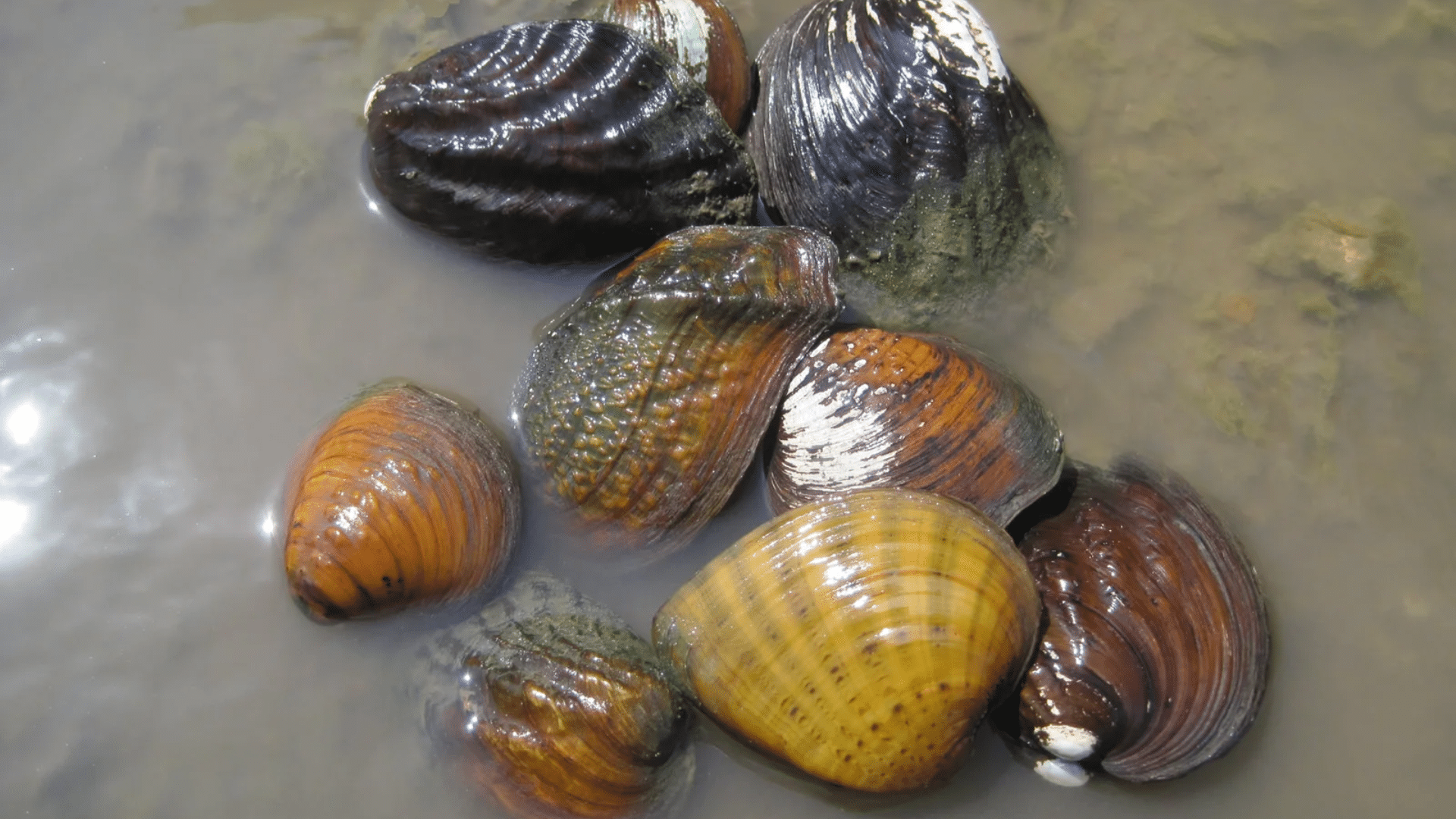
Freshwater clams are peaceful filter feeders that help keep your tank clean. They bury themselves in the substrate and filter out small food particles, improving water clarity.
These clams prefer tanks with soft sand or fine gravel and stable, well-oxygenated water.
They do best in mature tanks with plenty of natural food sources. Avoid placing them in newly set up aquariums since they rely on established bacteria and microfauna.
- Diet: Microscopic algae, detritus, powdered fish food
- Lifespan: 5–10 years
- Water Temperature: 70–80°F (21–27°C)
- Water pH Level: 7.0–8.0
27. Aquatic Snail Egg Colony
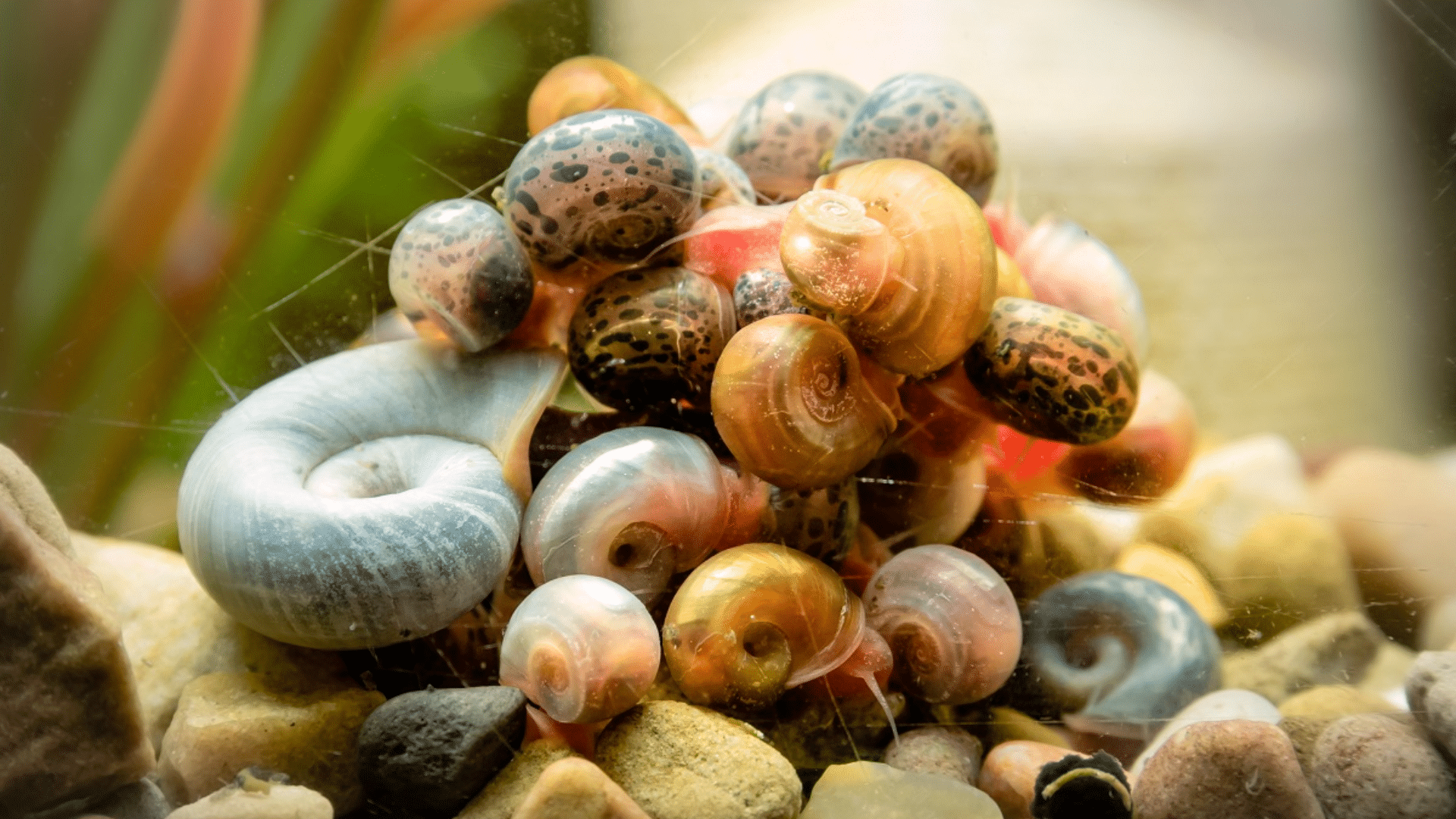
Snail egg colonies appear as small, clear clusters on glass or plants and can hatch into baby snails under the right conditions.
They’re a natural part of many aquariums and help maintain the tank’s ecosystem. Watching them develop is interesting for kids and beginners.
Keeping a few eggs allows you to grow your snail population slowly, but be cautious since they can multiply quickly.
- Diet: Algae, detritus, leftover food
- Lifespan: Varies by species (1–3 years for most)
- Water Temperature: 70–78°F (21–26°C)
- Water pH Level: 7.0–8.0
28. Sea Monkey (Brine Shrimp)
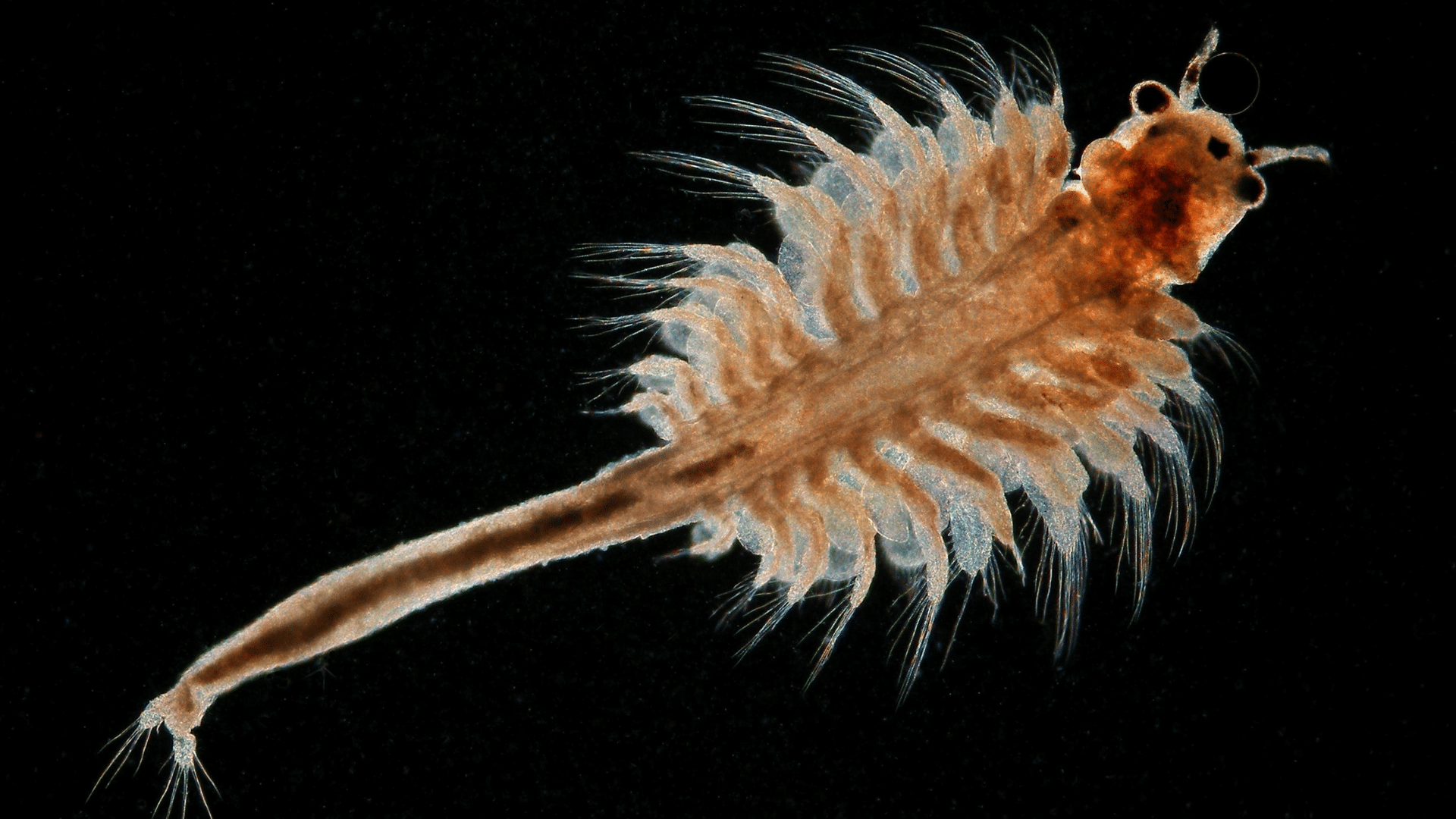
Sea monkeys, or brine shrimp, are tiny crustaceans often kept for fun or as live food for fish. They hatch from eggs and are easy to raise in small tanks.
These shrimp are active and fascinating to watch as they swim in groups.
They prefer salty water, so use marine salt when setting up their habitat. With basic care, they can live for several weeks and even reproduce in good conditions.
- Diet: Brine shrimp food, yeast, microalgae
- Lifespan: 1–2 months
- Water Temperature: 75–80°F (24–27°C)
- Water pH Level: 7.0–8.0
29. Fairy Shrimp
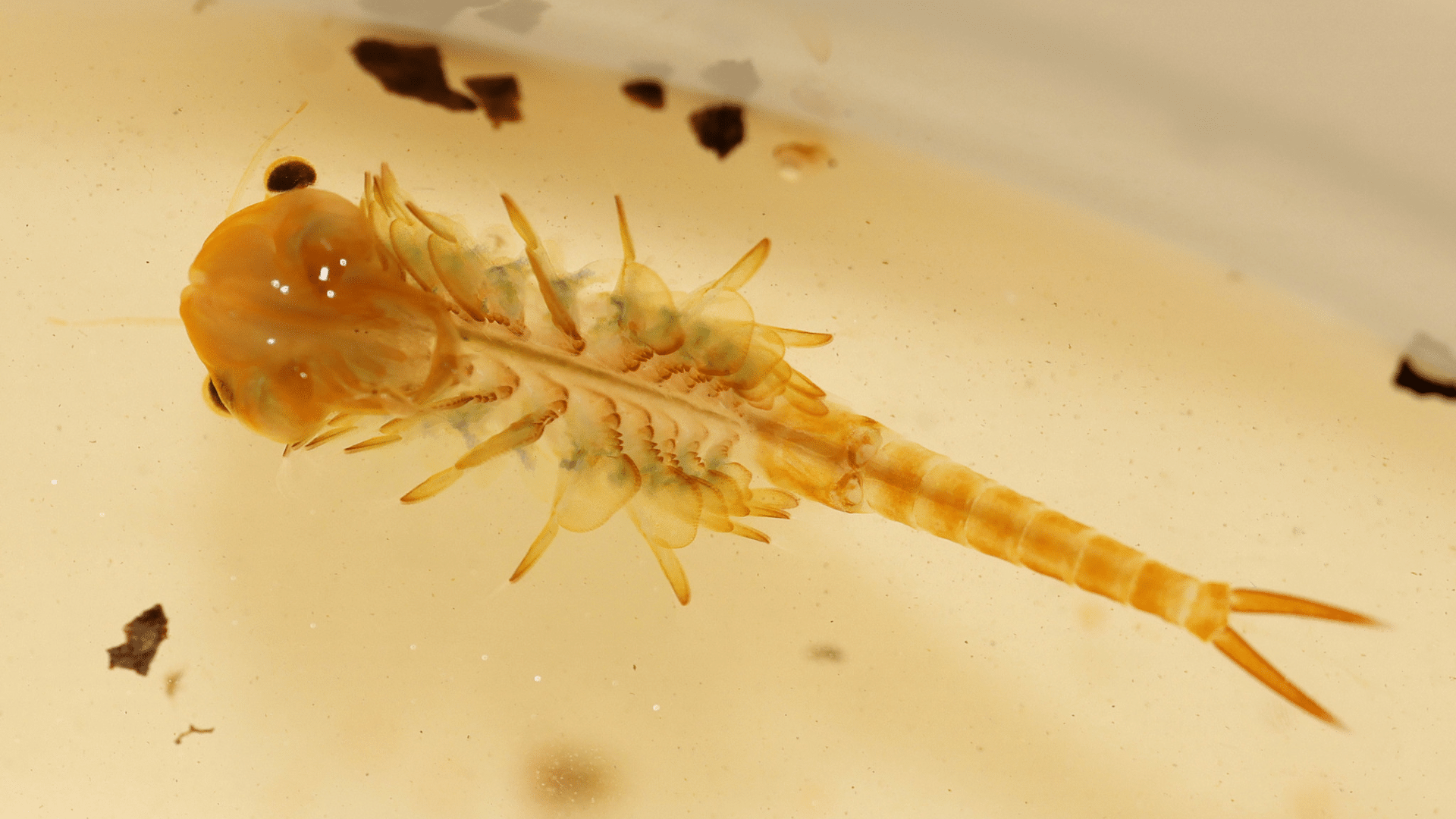
Fairy shrimp are delicate, transparent crustaceans that float gracefully in the water. They prefer freshwater environments and are often raised in small tanks or bowls.
These shrimp are gentle and peaceful, feeding on microscopic plants and particles.
They’re sensitive to water changes, so stable conditions are important. Their graceful swimming makes them a great educational or display species.
- Diet: Algae, micro foods, powdered fish food
- Lifespan: 1–3 months
- Water Temperature: 70–78°F (21–26°C)
- Water pH Level: 6.8–8.0
30. Marbled Crayfish
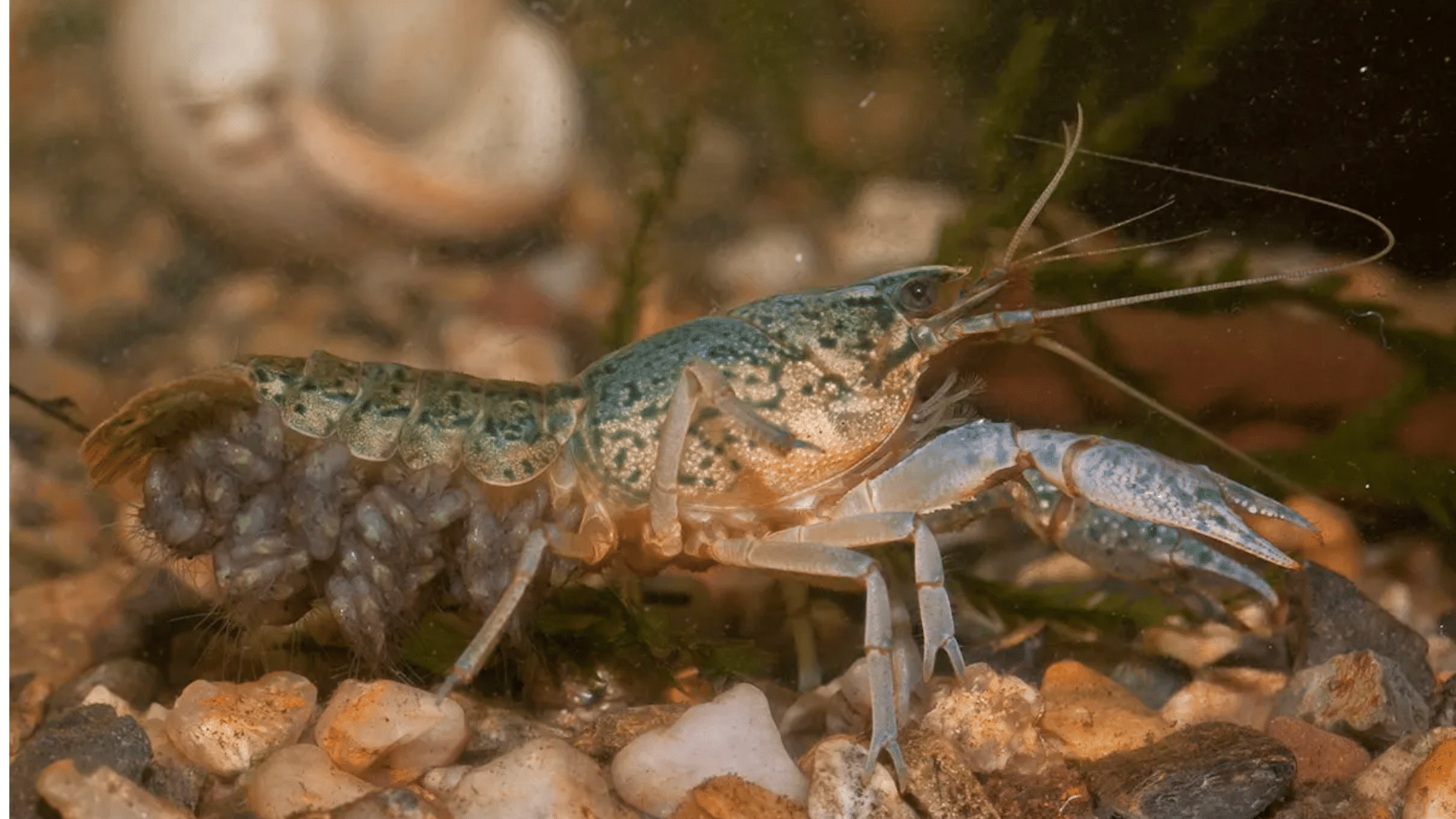
Marbled crayfish are unique because they can reproduce without a mate. They’re medium-sized, patterned crustaceans that make great display pets.
These crayfish enjoy digging, rearranging gravel, and exploring tank decorations.
They’re hardy but can be territorial, so one per tank is best. Clean water and plenty of hiding spots help keep them active and stress-free.
- Diet: Pellets, vegetables, worms, shrimp
- Lifespan: 2–3 years
- Water Temperature: 70–80°F (21–27°C)
- Water pH Level: 6.5–8.0
31. Dwarf Crayfish
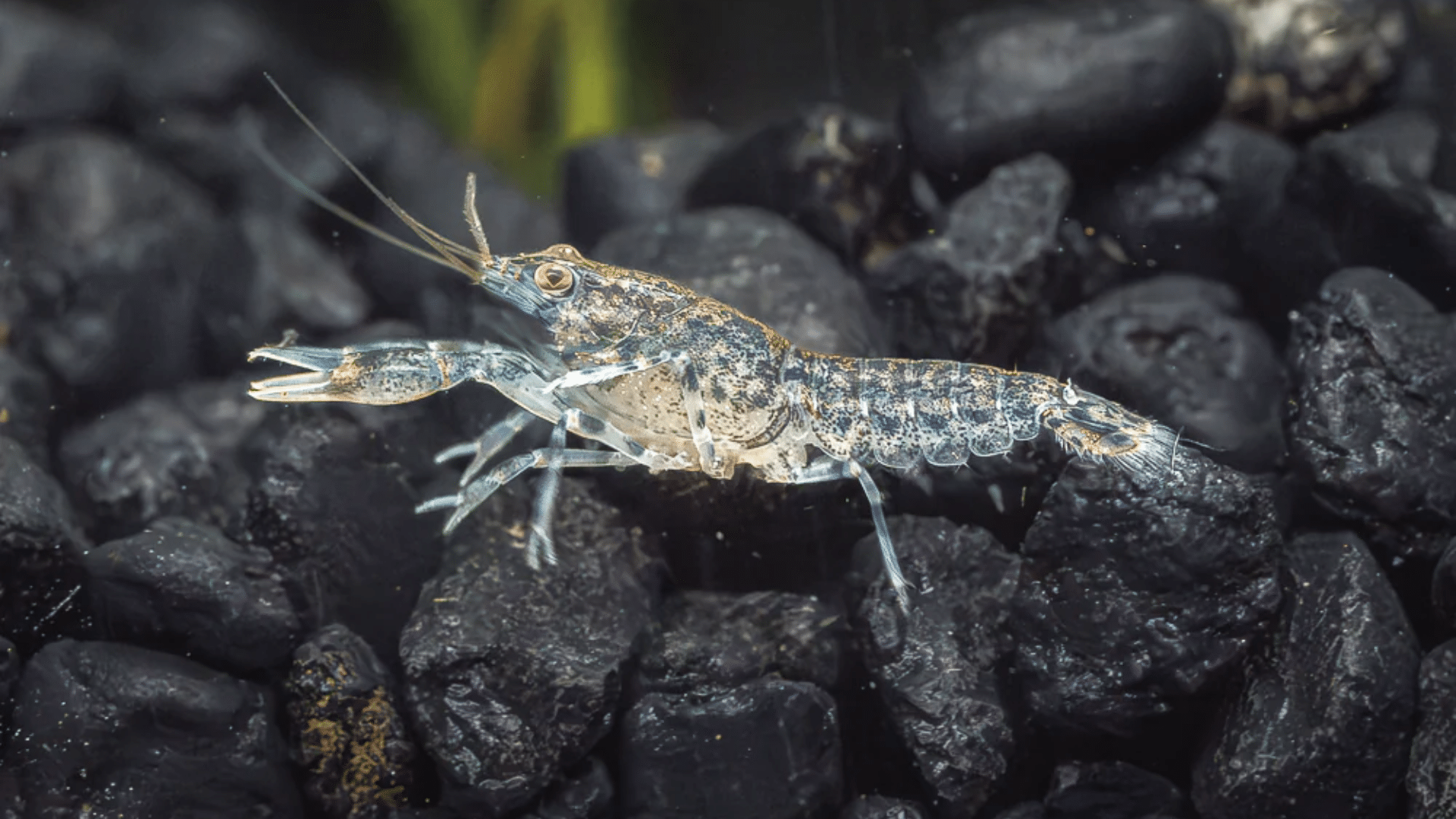
Dwarf crayfish are small, colorful crustaceans that do well in community tanks. Unlike larger crayfish, they’re peaceful and safe with fish or shrimp.
They stay active during the day, moving along the substrate and cleaning up leftovers. These crays love plants and hiding spots where they can rest.
Their bright orange or blue shells add color and movement to small aquariums.
- Diet: Sinking pellets, algae wafers, blanched vegetables
- Lifespan: 1.5–2 years
- Water Temperature: 68–77°F (20–25°C)
- Water pH Level: 6.5–8.0
32. Freshwater Mussel
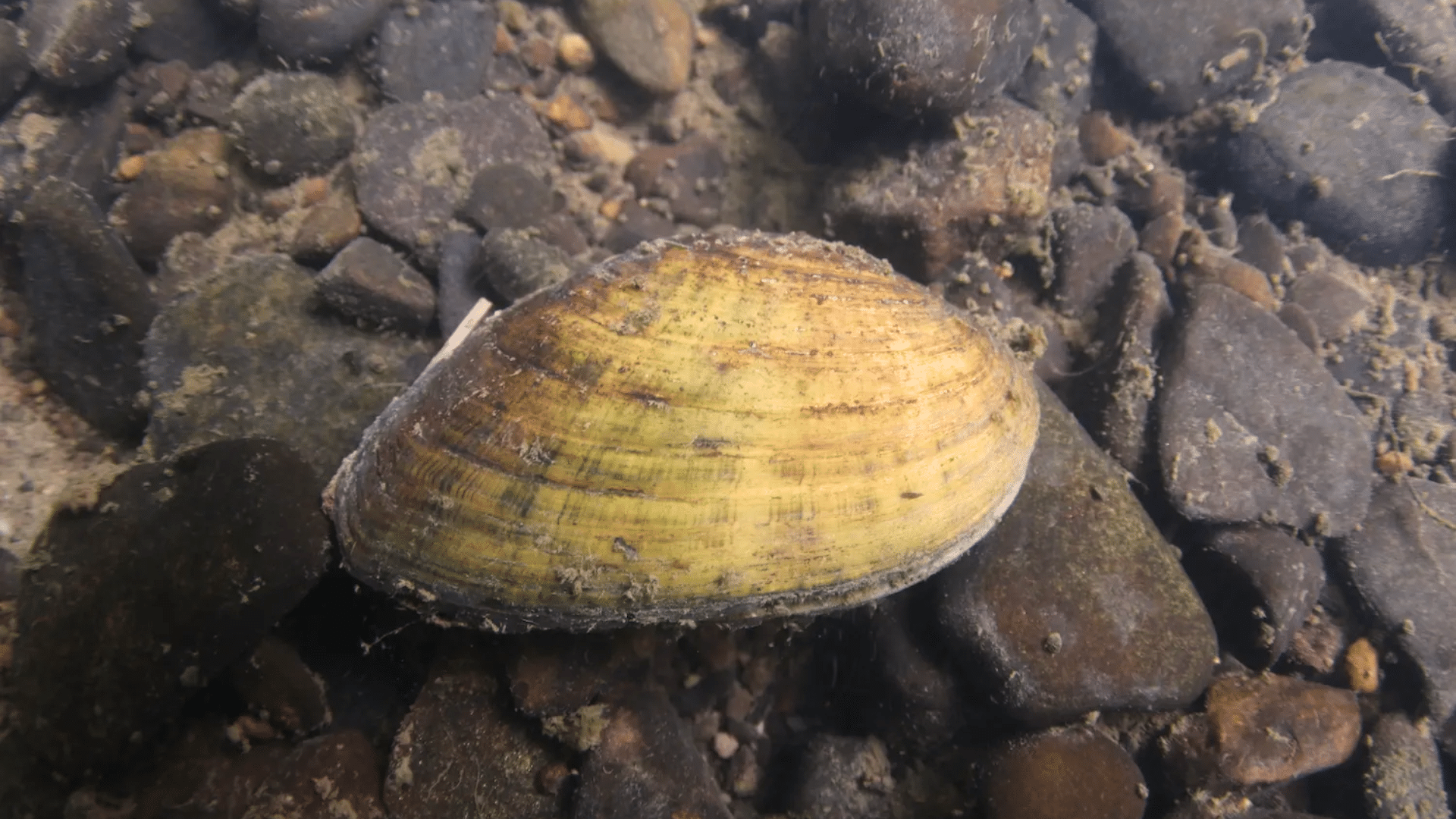
Freshwater mussels act as natural filters, cleaning water by removing fine debris and algae.
They stay buried in sand or fine gravel with just a small part of their shell visible. These calm creatures are easy to keep once the tank is stable and well-aerated.
Avoid placing them in tanks with heavy fish loads or poor water quality.
- Diet: Microscopic algae, detritus, suspended particles
- Lifespan: 8–12 years
- Water Temperature: 68–78°F (20–26°C)
- Water pH Level: 6.8–8.0
33. Aquatic Flatworm (Planarian)
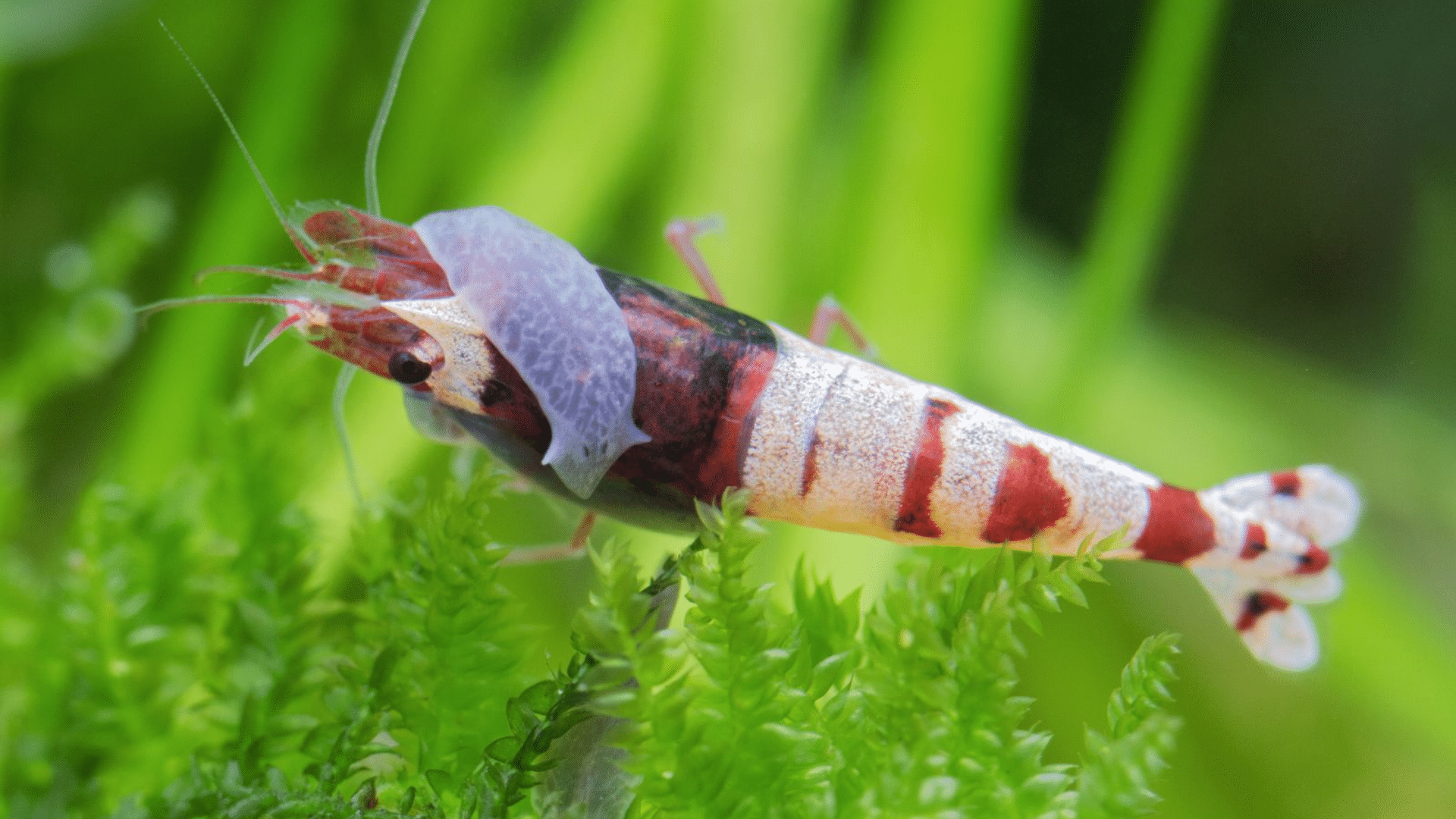
Aquatic flatworms, or planarians, are small, soft-bodied creatures that glide smoothly over surfaces.
They’re harmless in small numbers and help clean up leftover food and detritus.
Their simple, flat bodies make them interesting to observe, especially under gentle light. In clean, balanced tanks, they contribute to the ecosystem and can even regenerate if injured.
- Diet: Algae, biofilm, leftover fish food
- Lifespan: 6 months–1 year
- Water Temperature: 70–78°F (21–26°C)
- Water pH Level: 6.5–7.8
Ideal Tank Setup for Non-Fish Species
Setting up a tank for non-fish pets isn’t hard, but a few details matter. I like using a soft substrate such as sand or smooth gravel because it’s safe for shrimp, snails, and crabs.
Add plants, live or artificial, to give them shade and improve water quality.
They also make the tank look more natural. Include hiding spots like rocks, caves, or driftwood so your pets can rest or feel secure.
A gentle filter works best since strong currents can stress smaller animals.
When mixing species, make sure they’re compatible and have enough space to avoid crowding.
Keep the lighting soft to moderate, as bright lights can warm the water too much. Finally, check that the water is clean, treated, and at a steady temperature.
With these simple steps, your tank will stay balanced, and your non-fish pets will stay healthy.
Common Mistakes to Avoid with Non-Fish Pets
Even easy pets need the right care. I’ve seen people make small mistakes that cause big problems later. These are a few to watch out for:
- Overcrowding or mixing incompatible species: Too many pets or the wrong mix can lead to stress or fighting. Always research which species can live together peacefully.
- Skipping water changes or poor filtration: Clean water is essential. Even non-fish pets need fresh, filtered water to stay healthy and active.
- Overfeeding and lack of hiding areas: Extra food can dirty the tank fast. Provide spots to hide so pets feel safe and less stressed.
- Ignoring temperature or humidity needs: Each species has its own comfort range. Keep the tank’s temperature and humidity steady to prevent illness or slow growth.
Conclusion
Keeping non-fish pets is an easy way to make your aquarium more fun and relaxing. They need less care than fish, but still bring plenty of movement and personality to your tank.
From shrimp cleaning up leftovers to snails keeping the glass spotless, these little creatures keep your setup balanced and lively.
Start small, learn their needs, and you’ll quickly see how simple it is to keep them happy. With the right setup and a bit of care, your aquarium can become a calm, colorful space full of life.
Ready to begin? Choose one or two non-fish pets from this list and watch your tank change in the best way possible.


